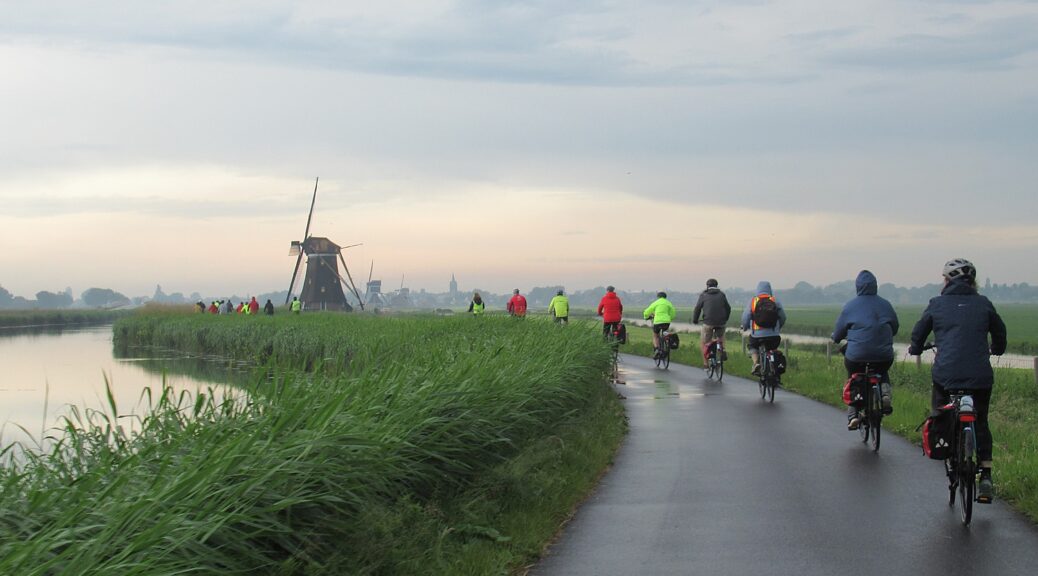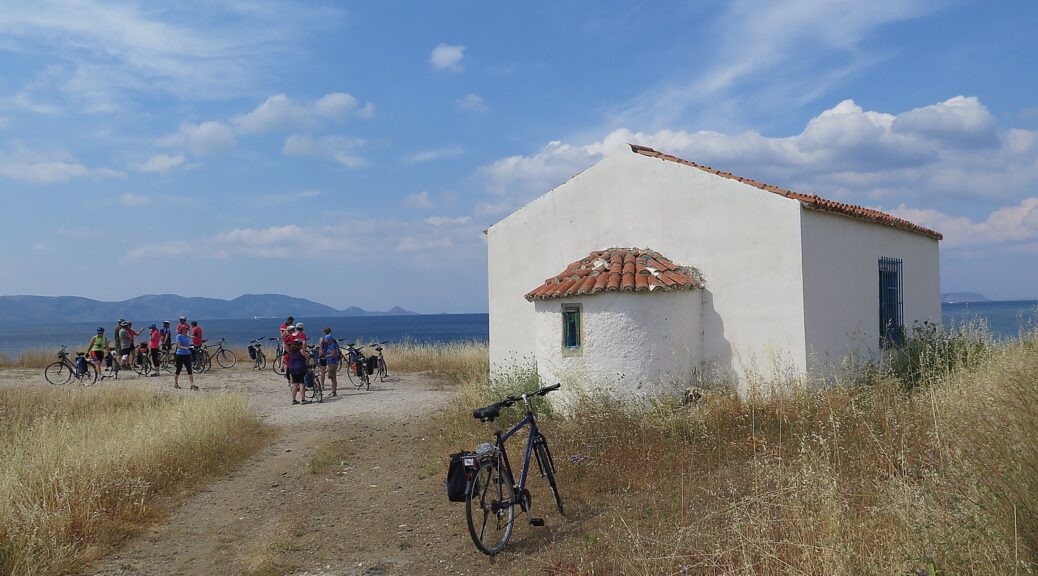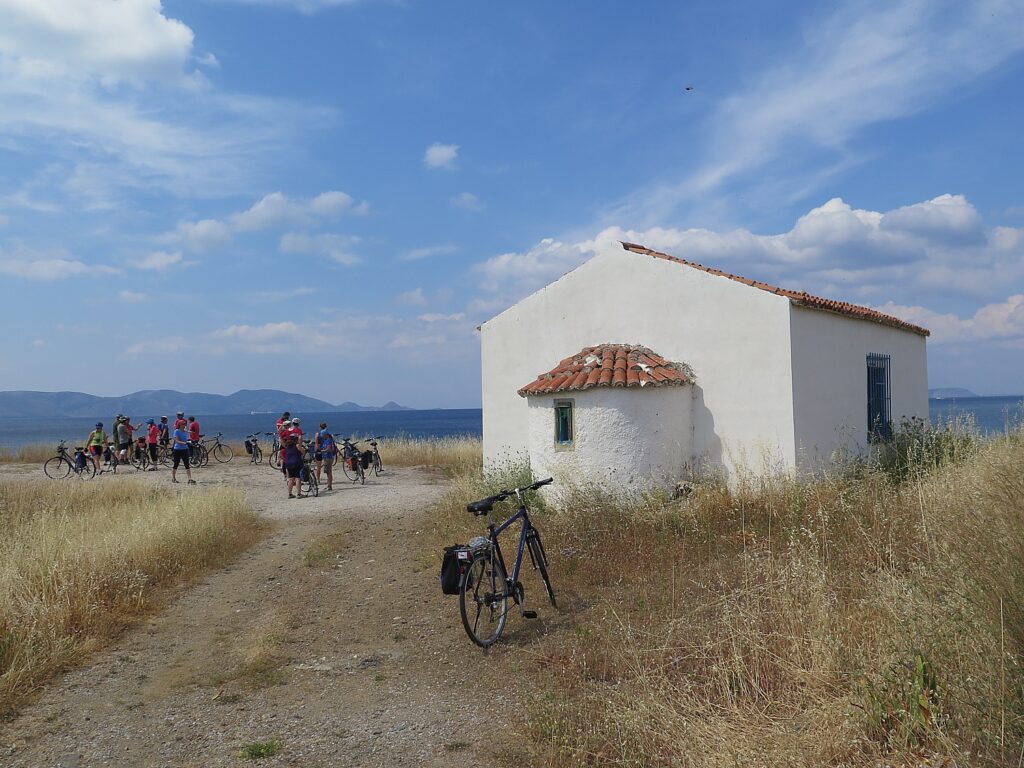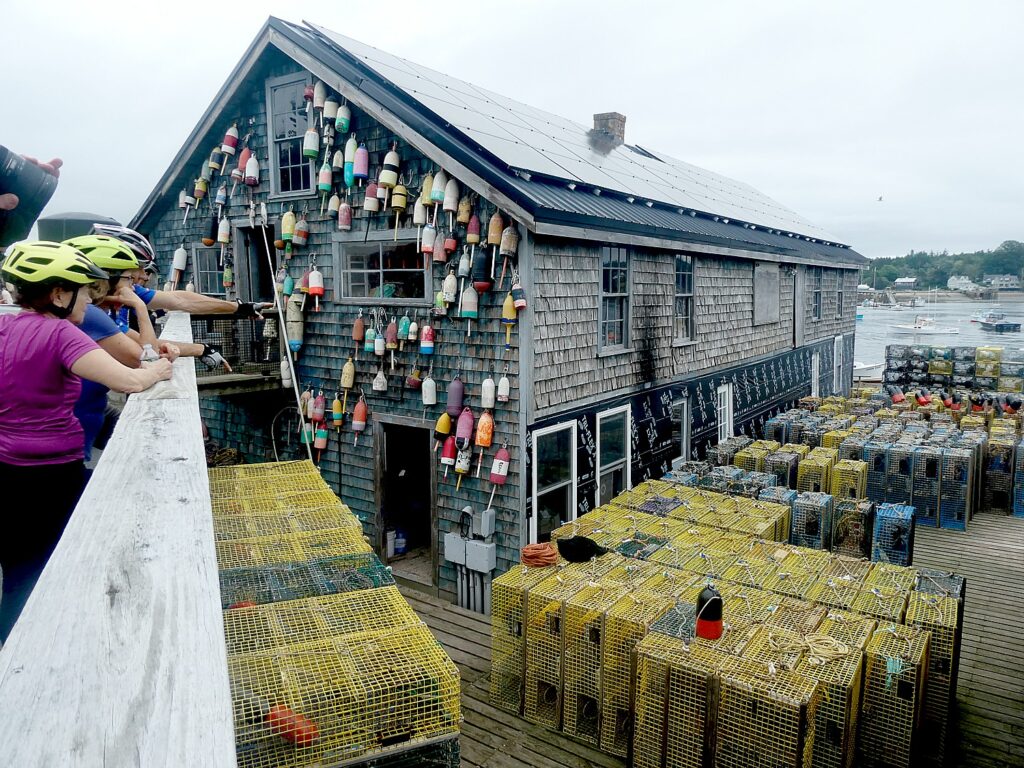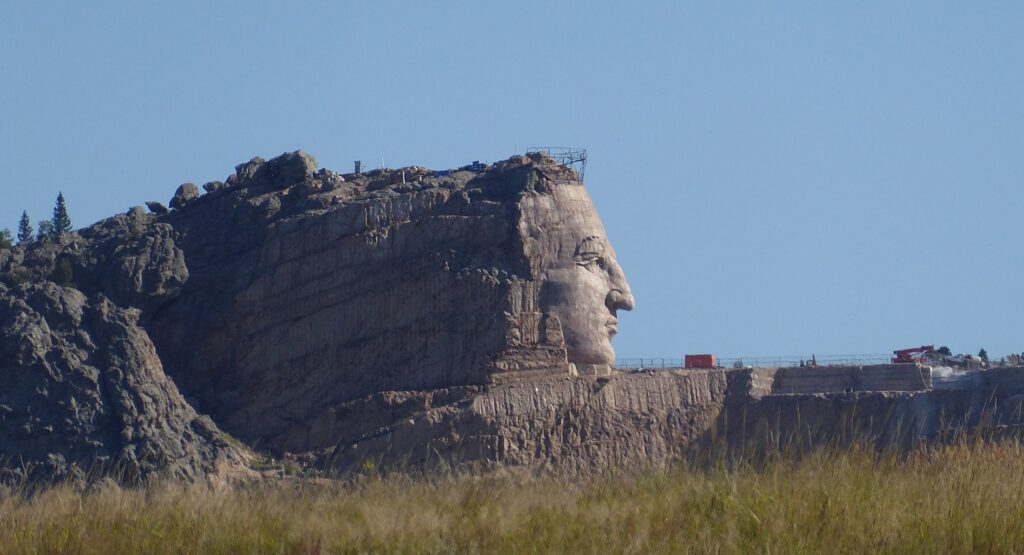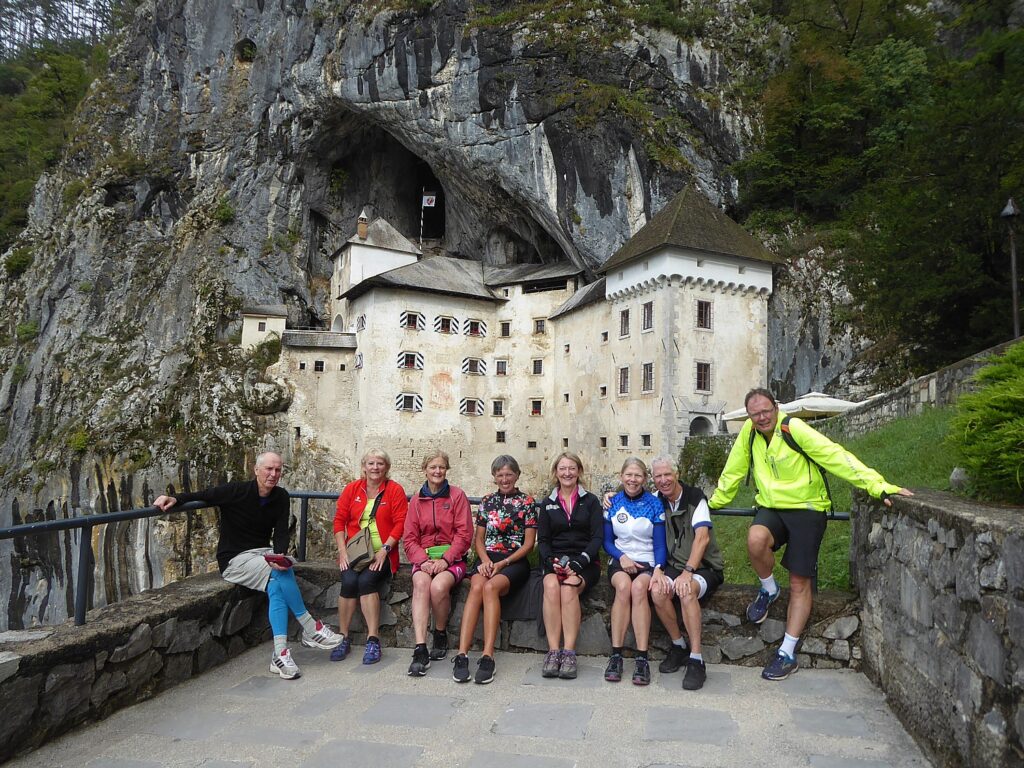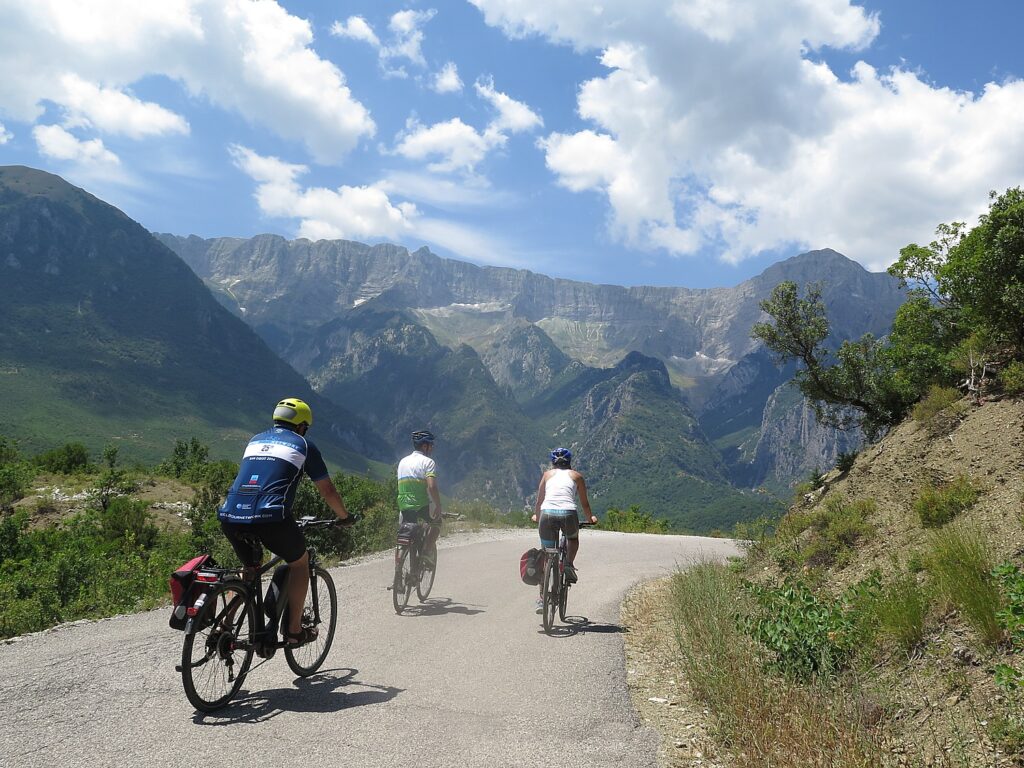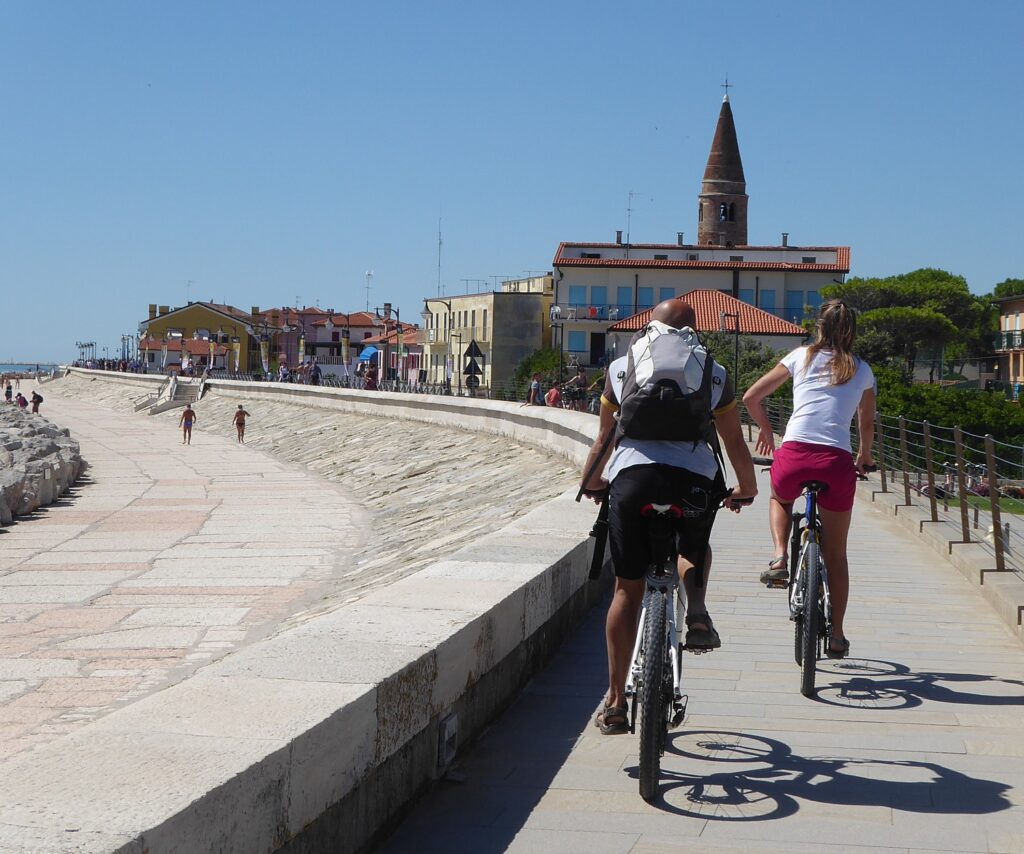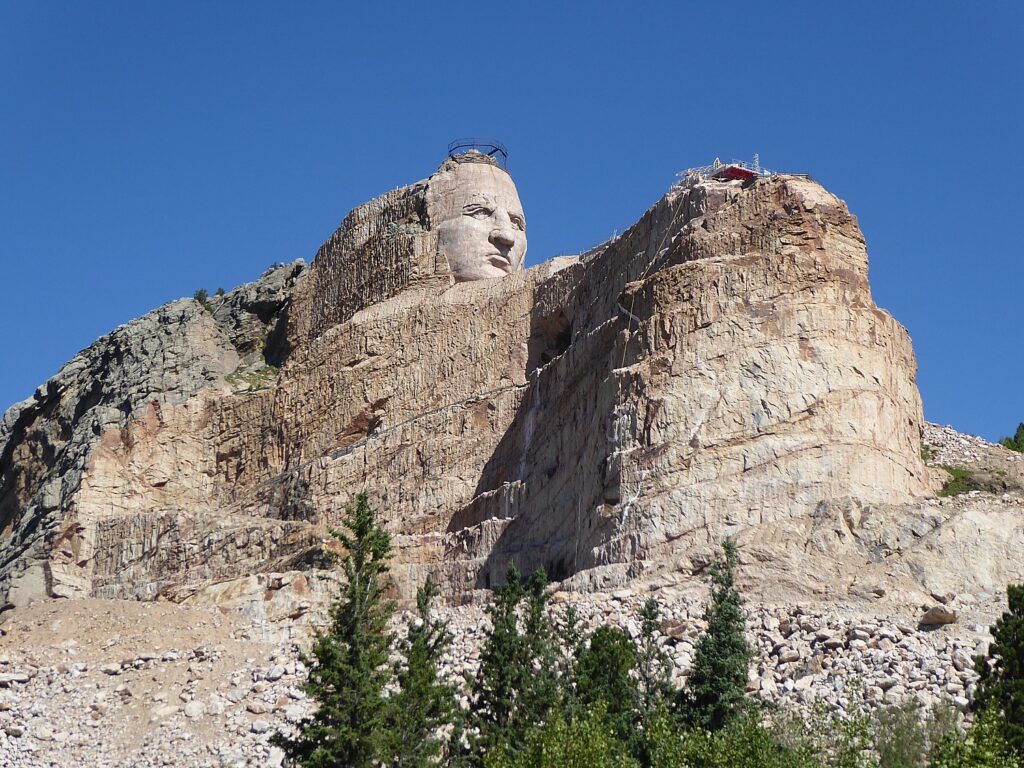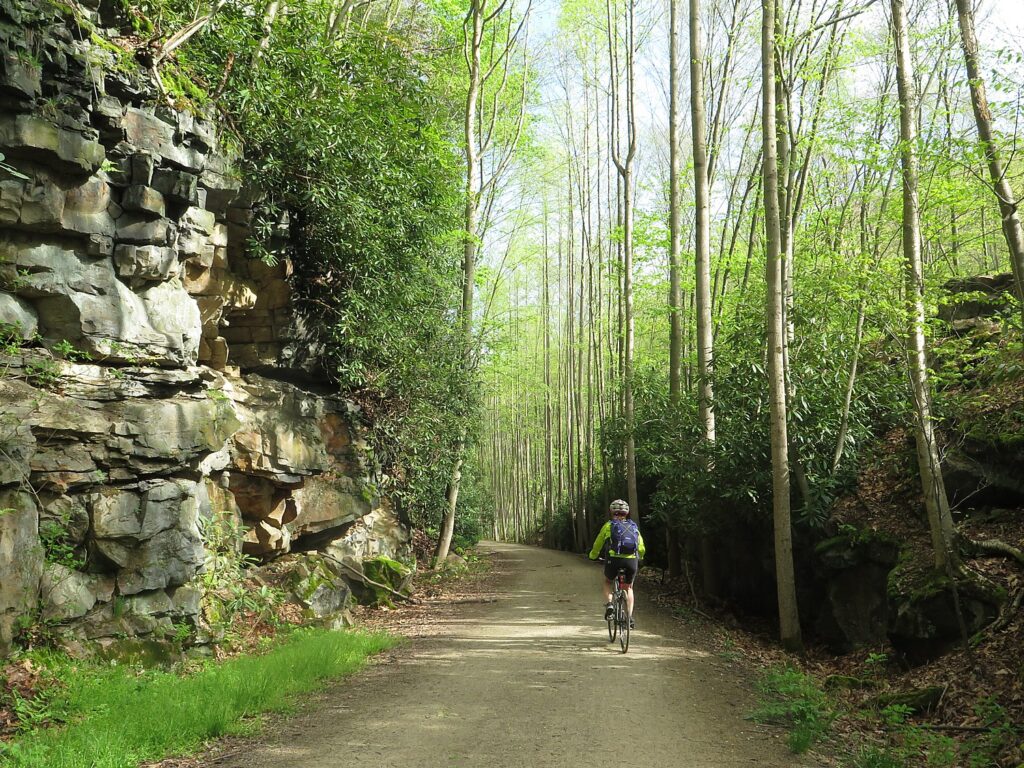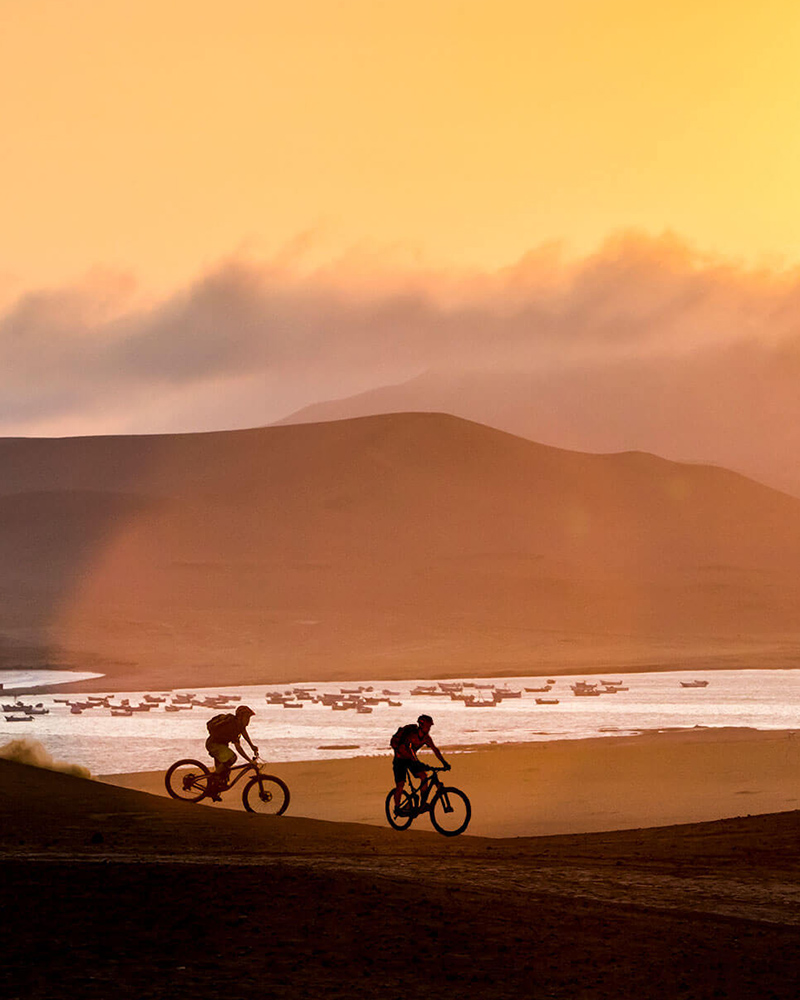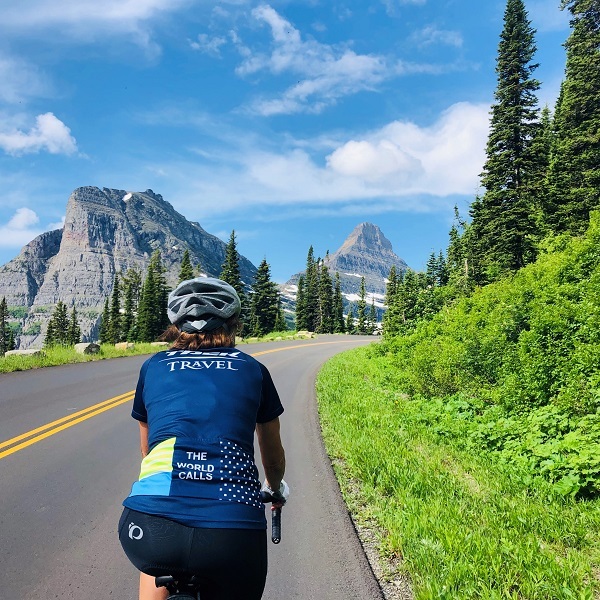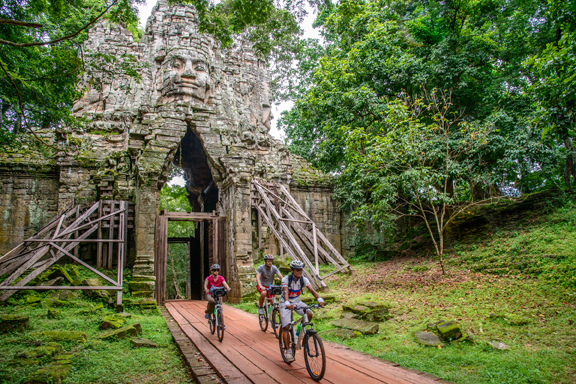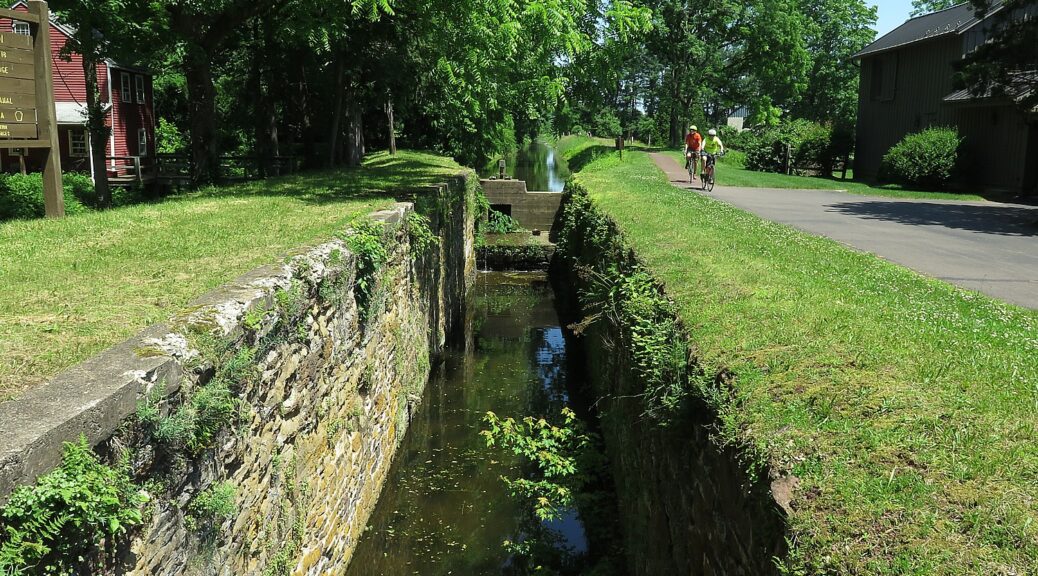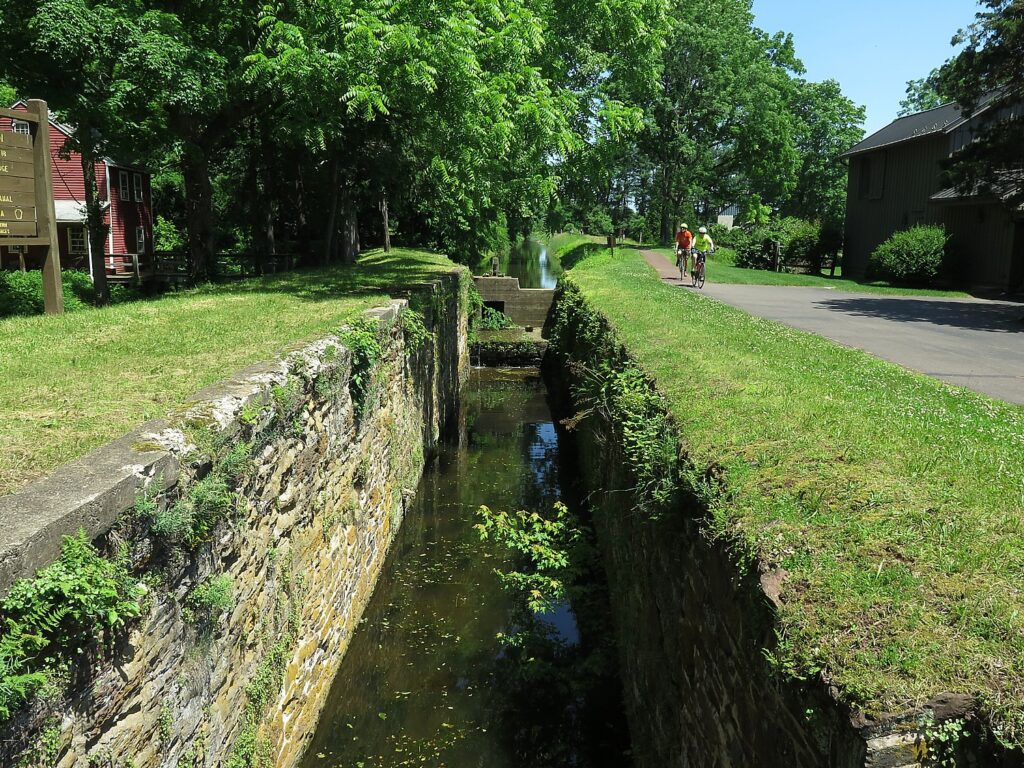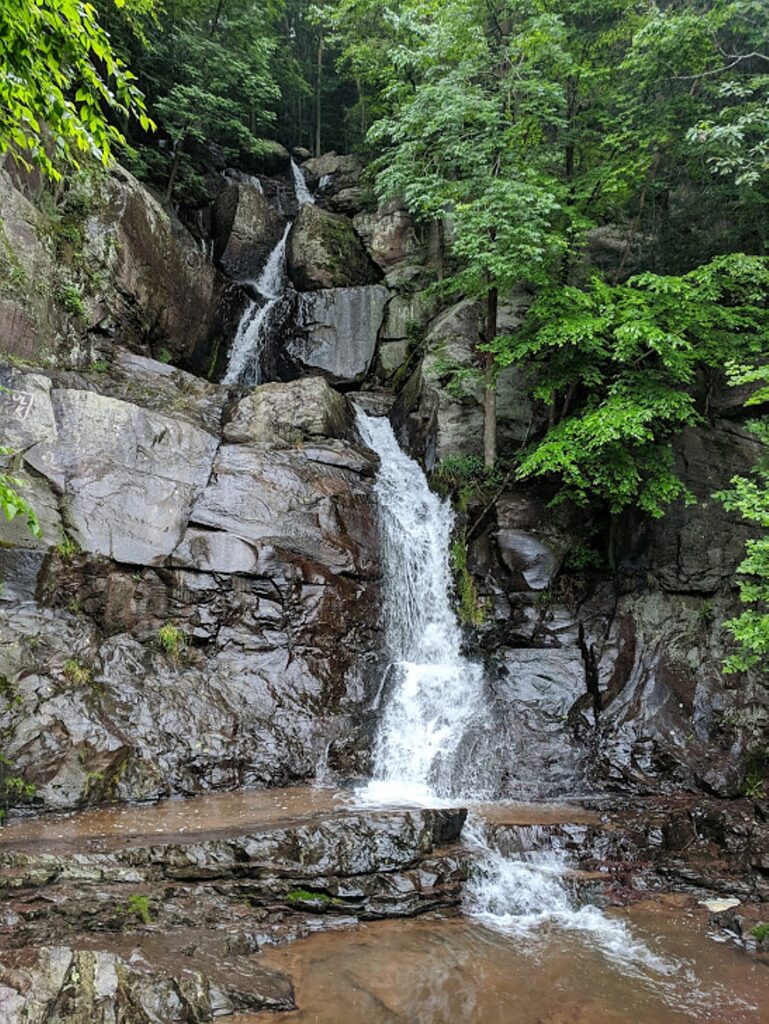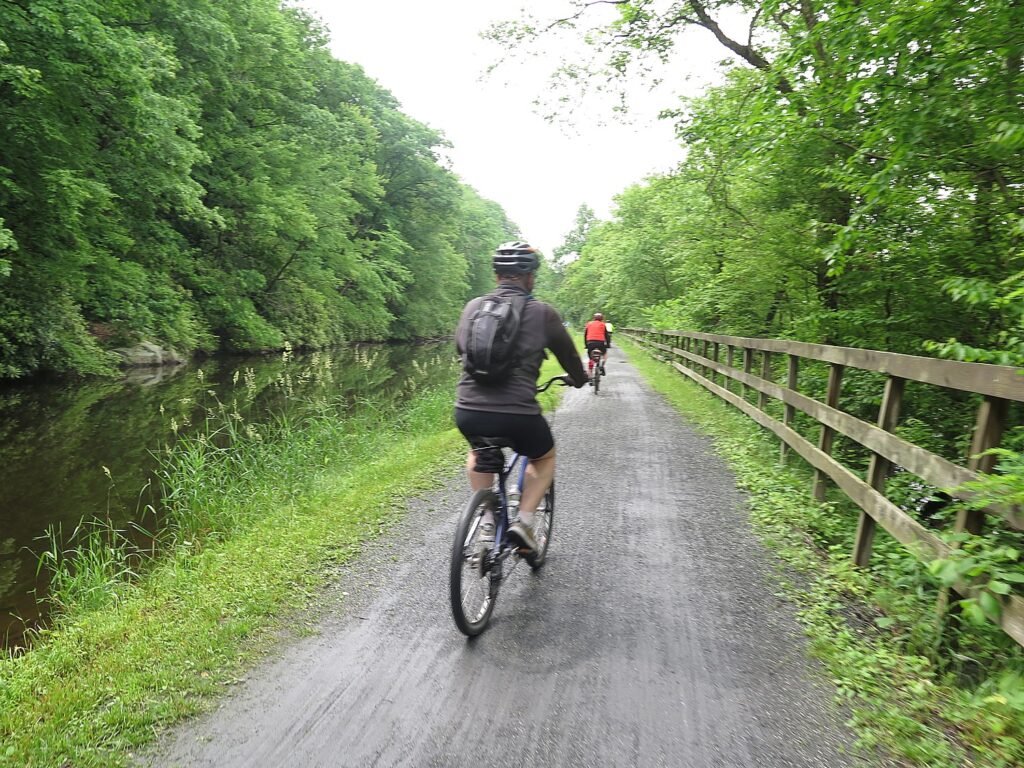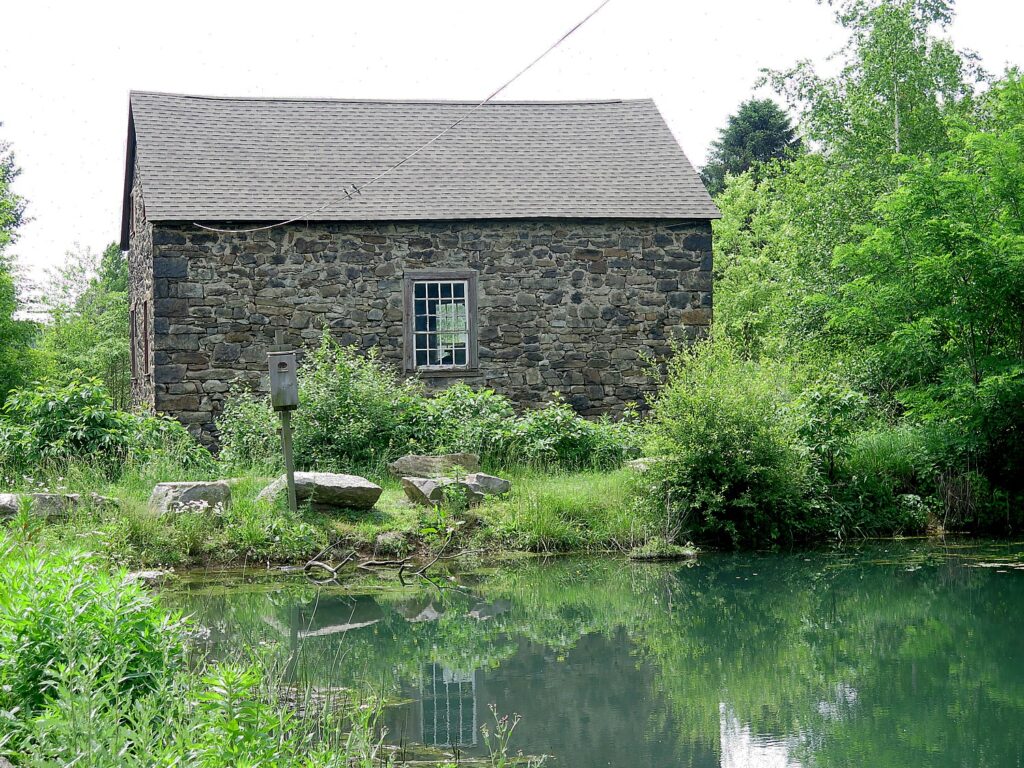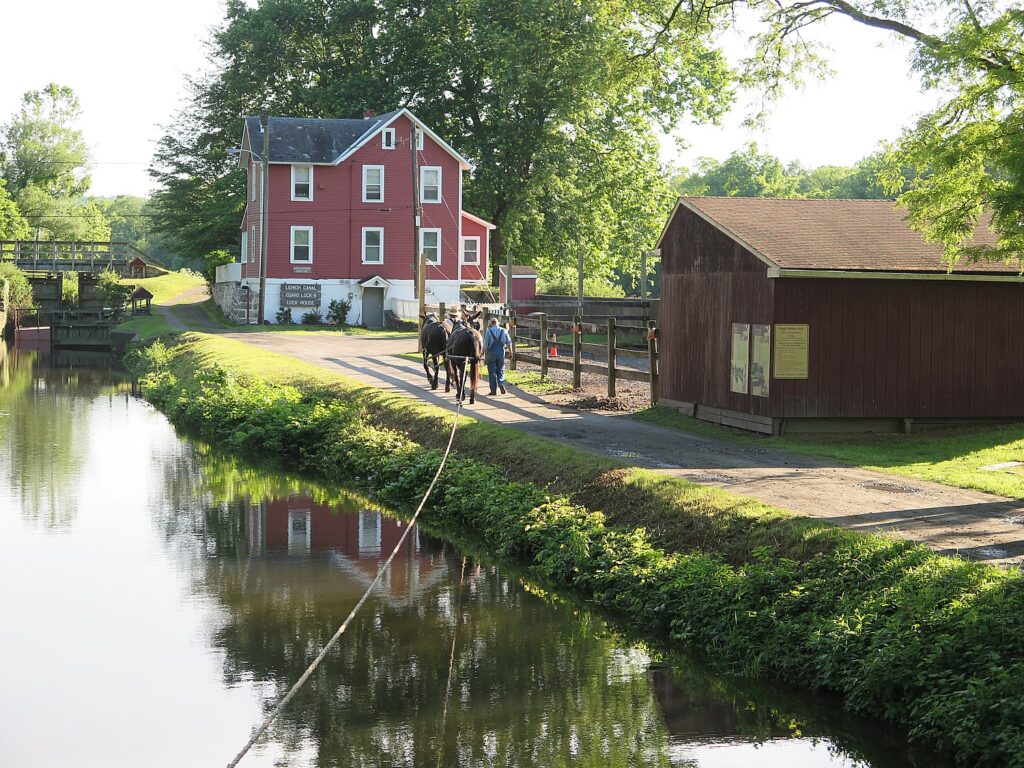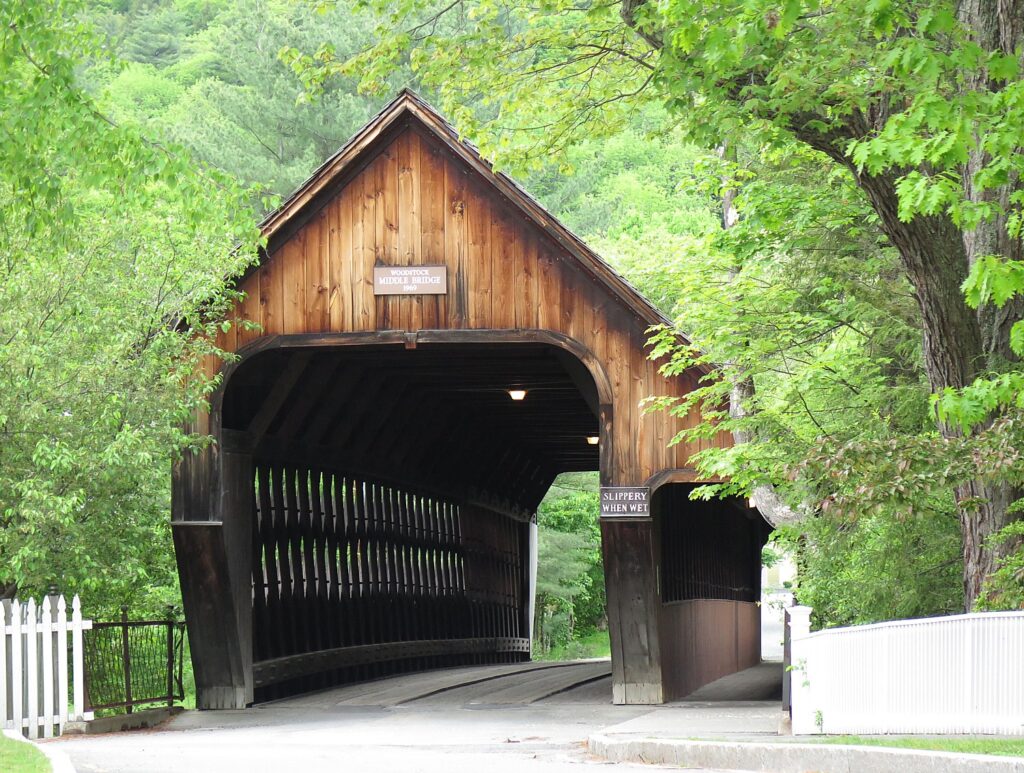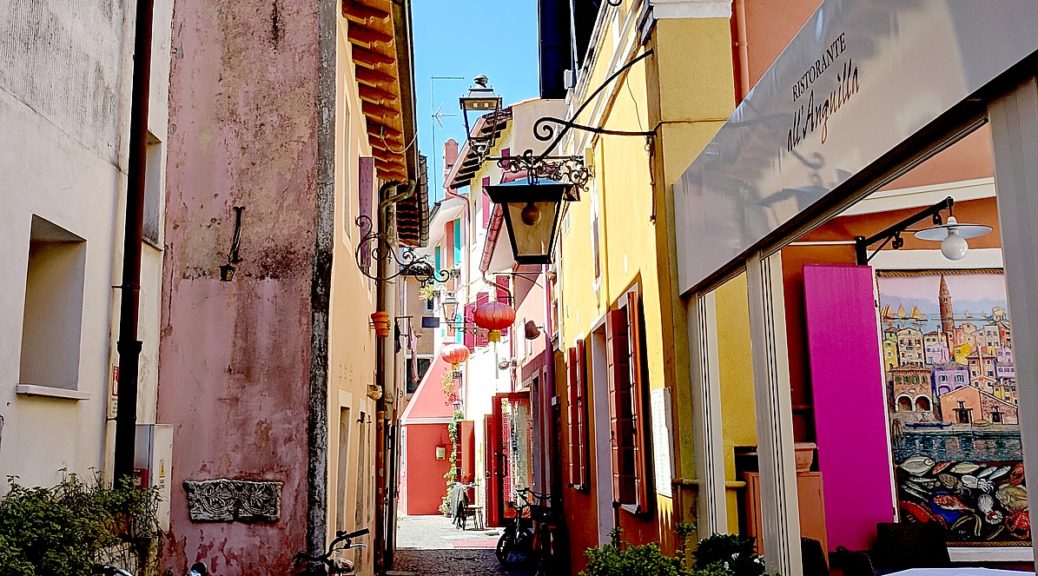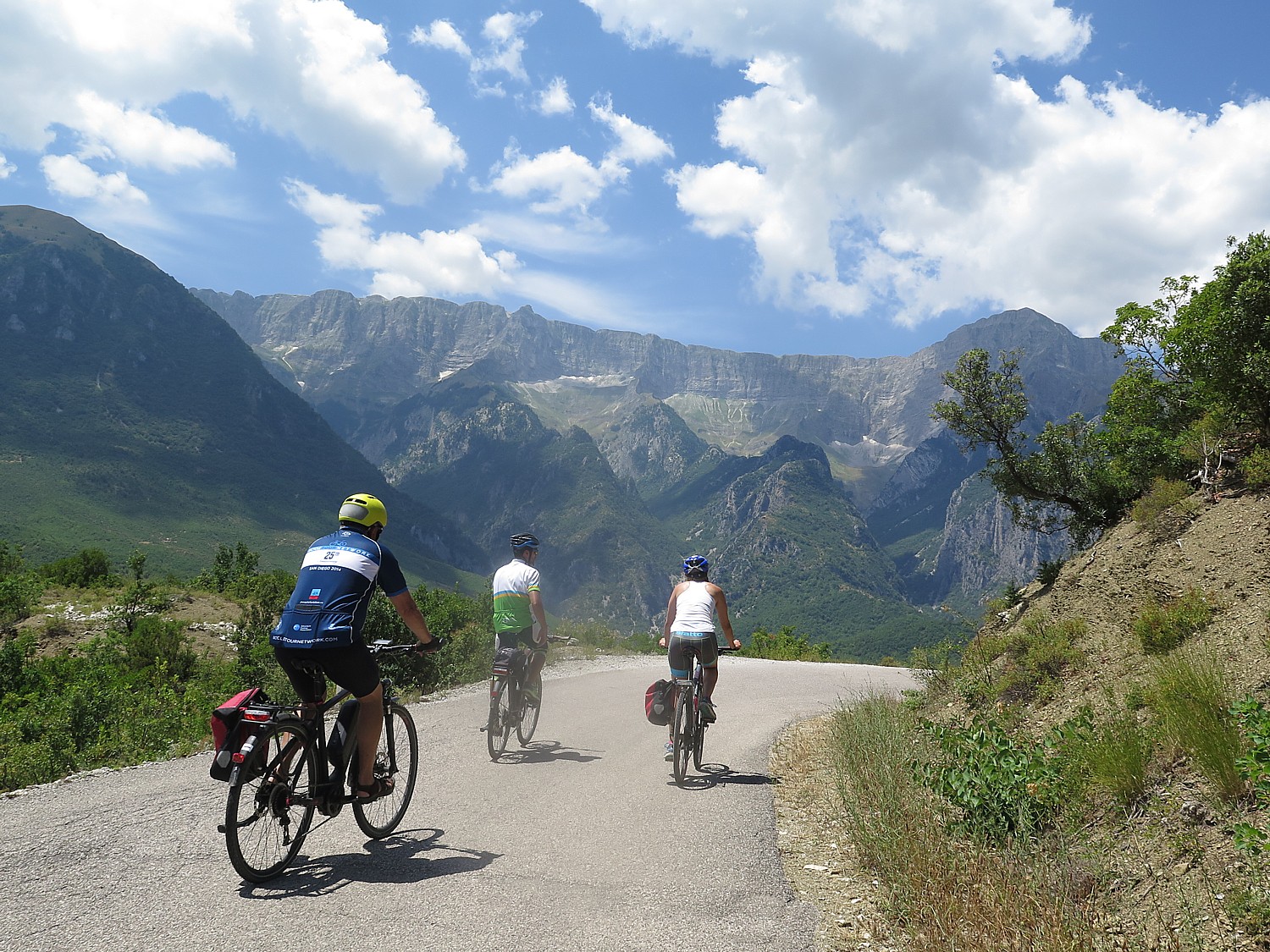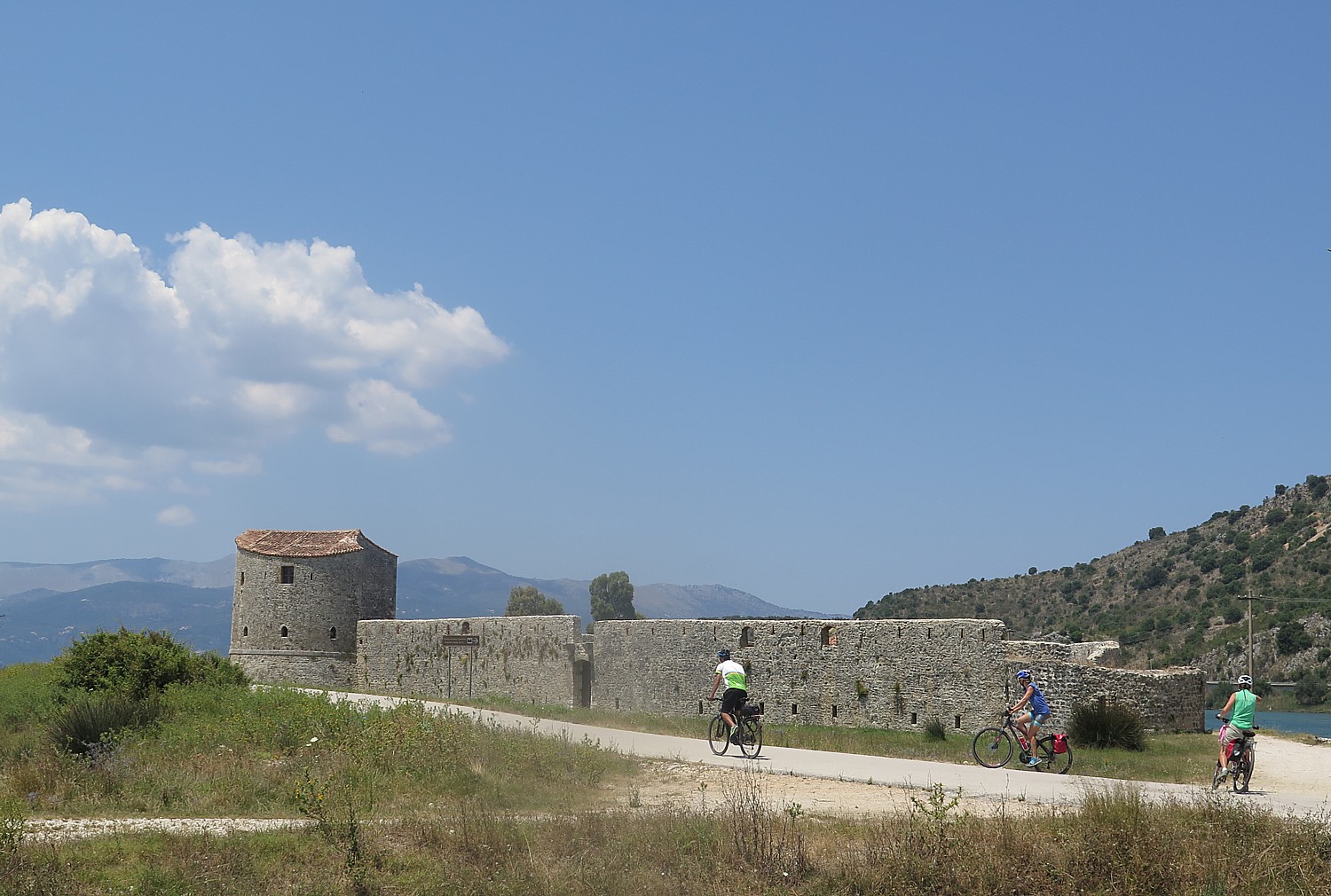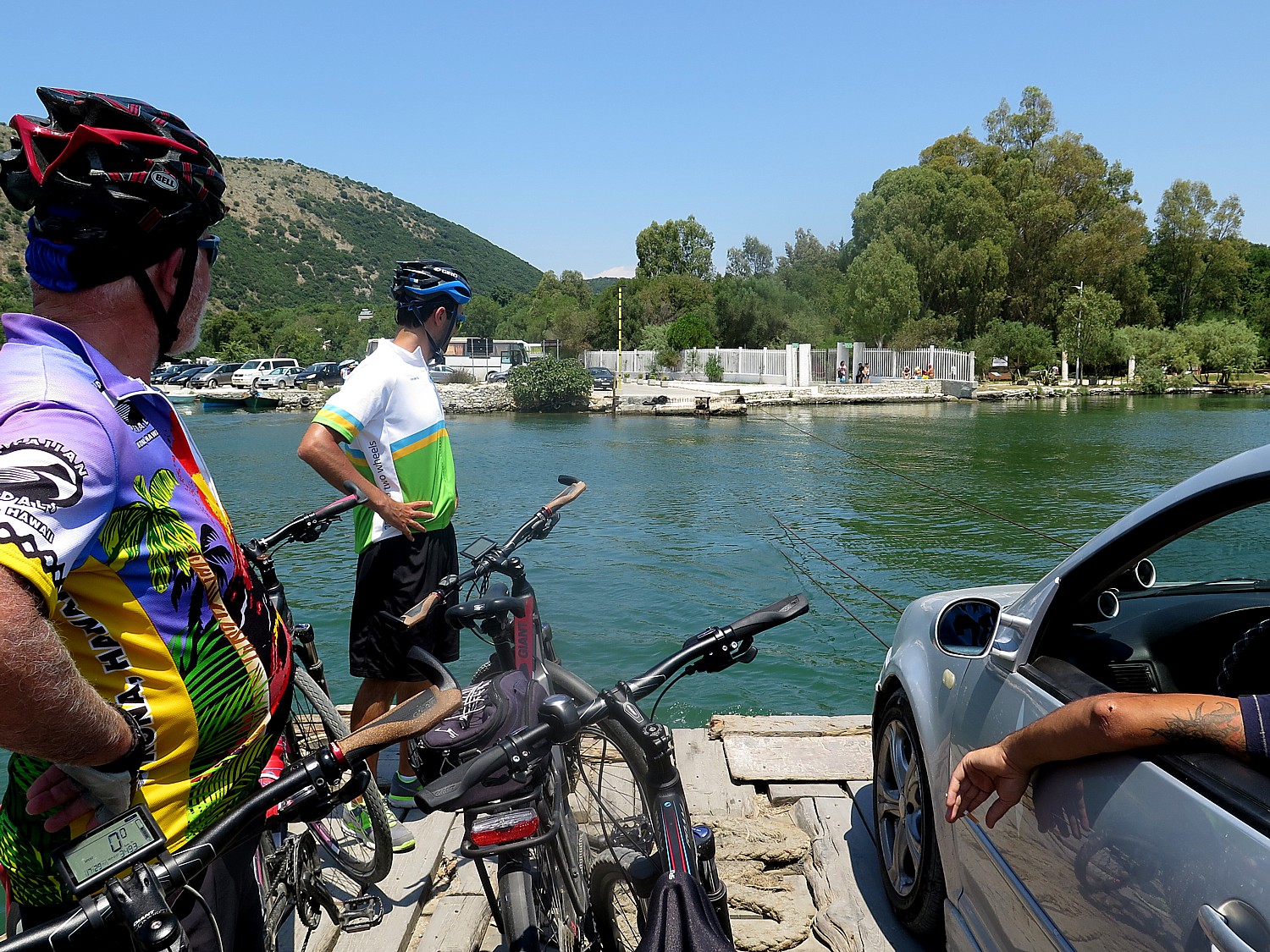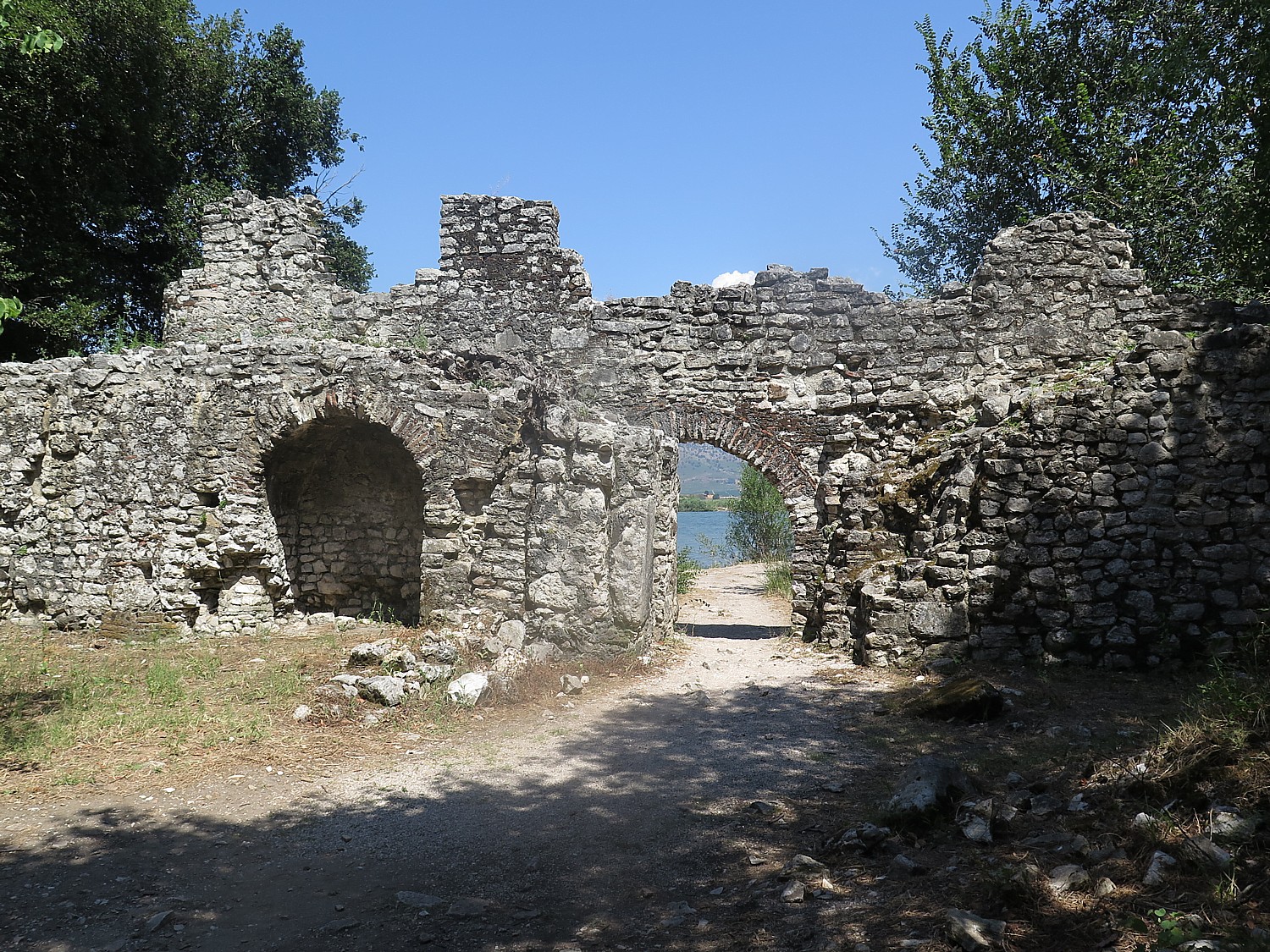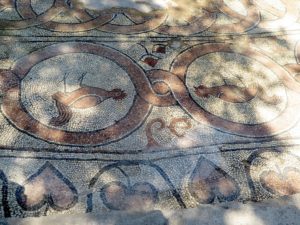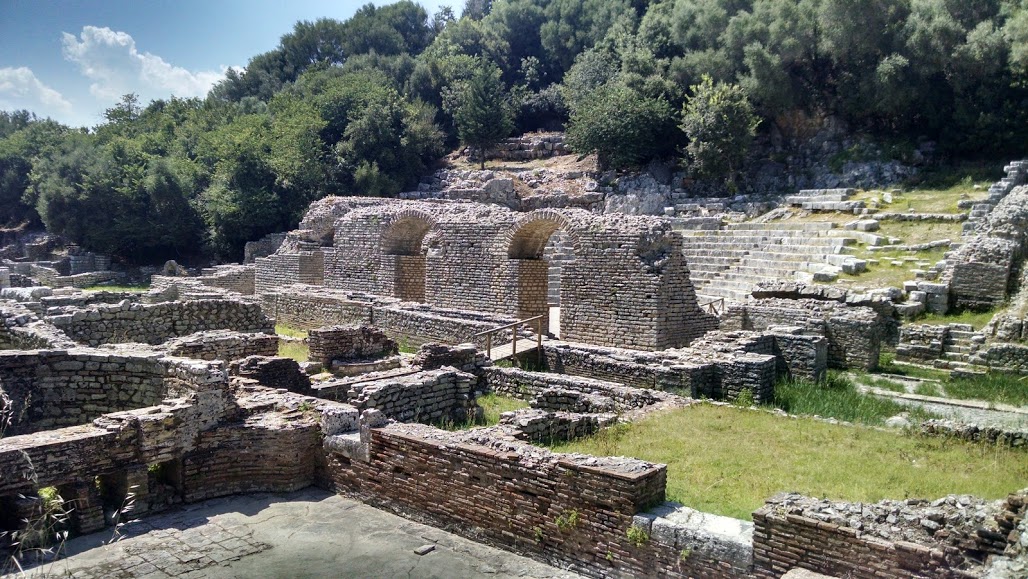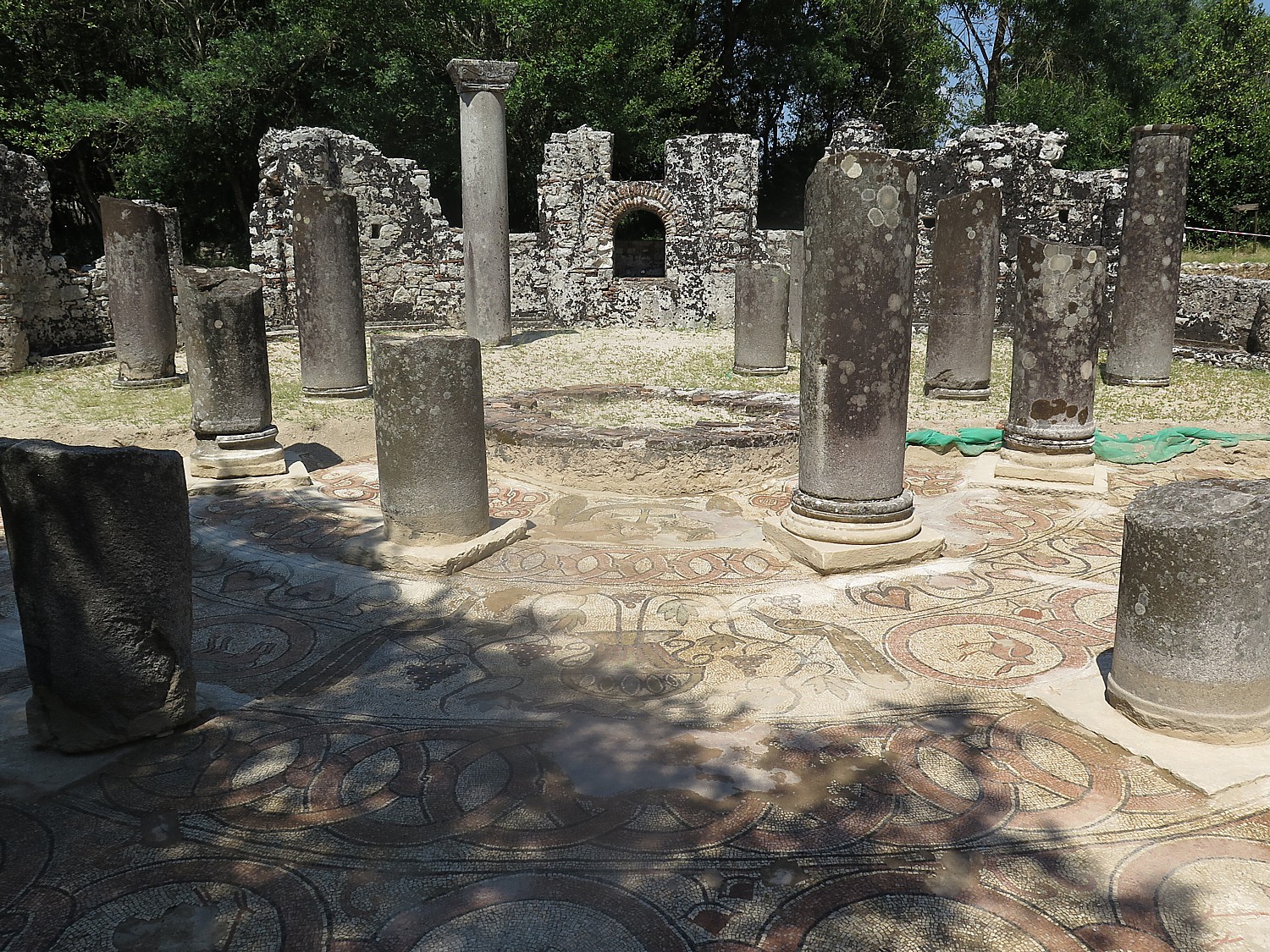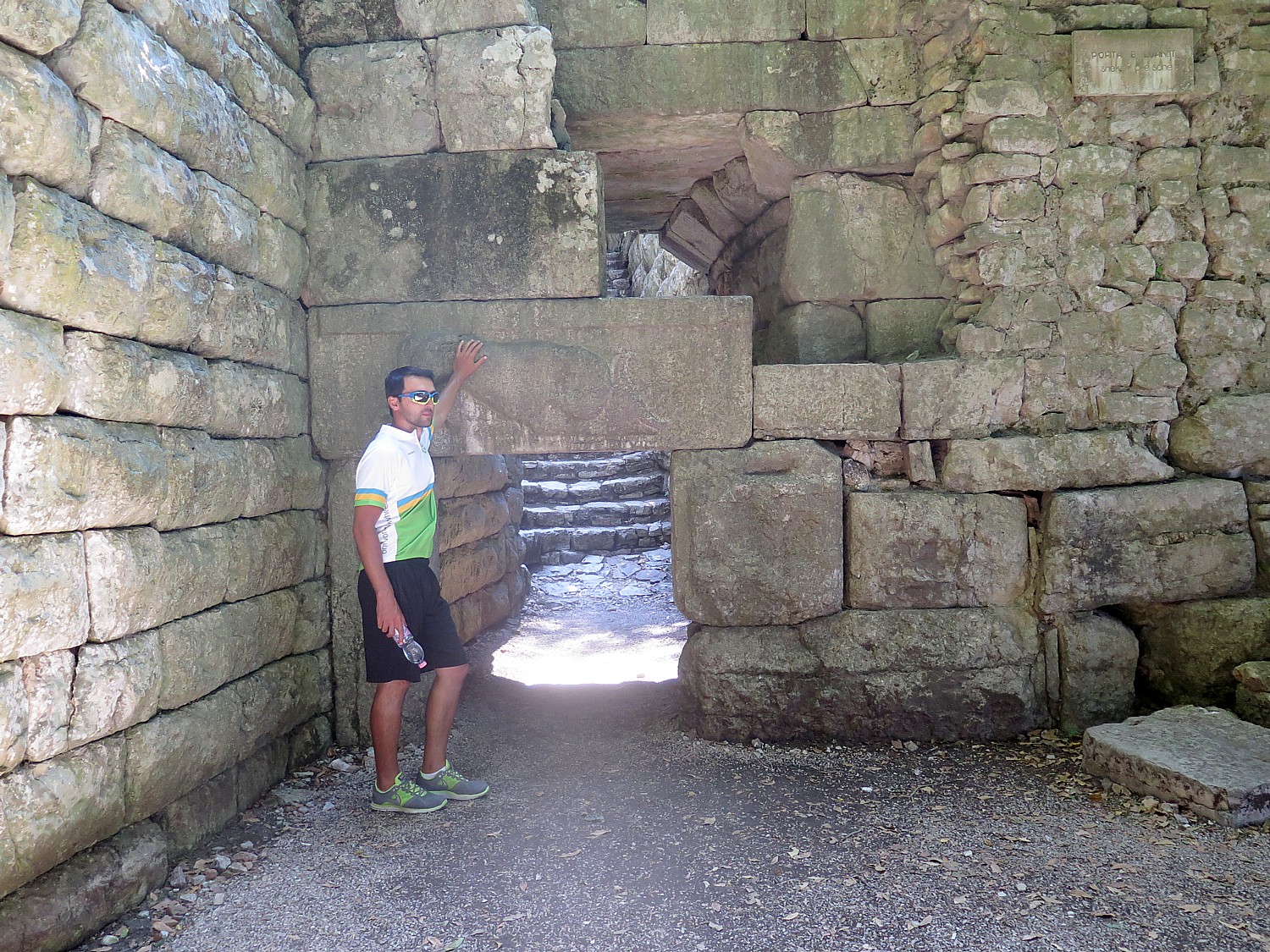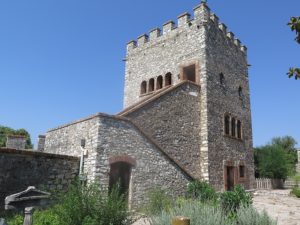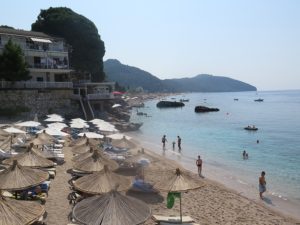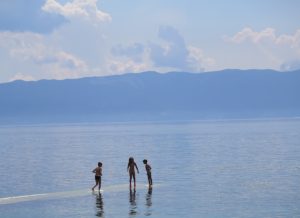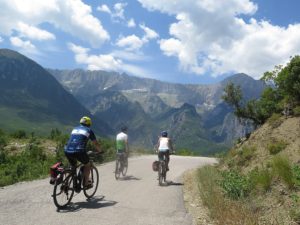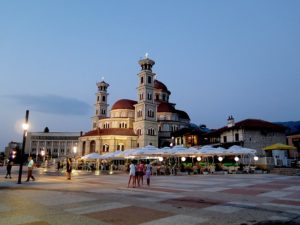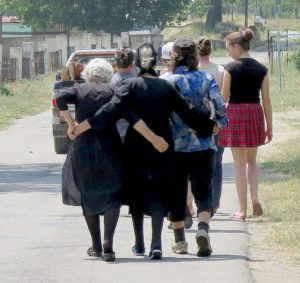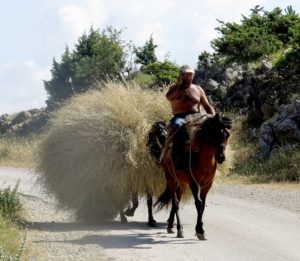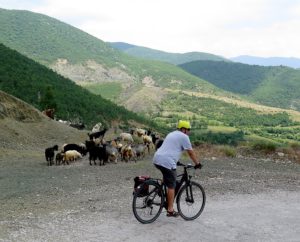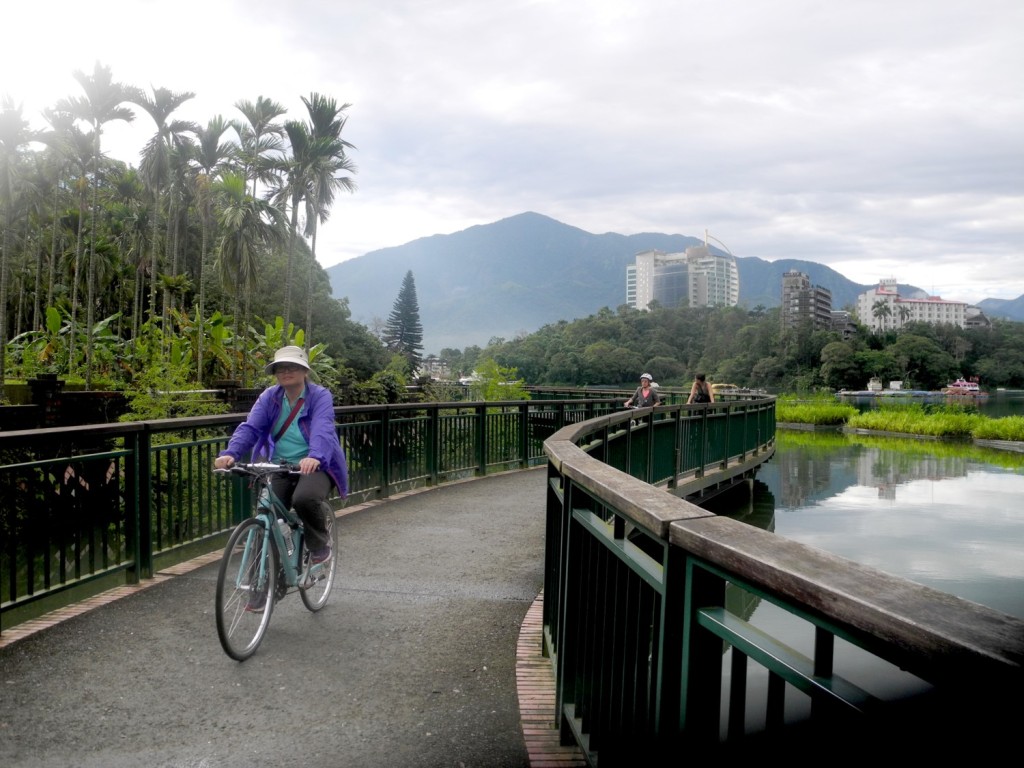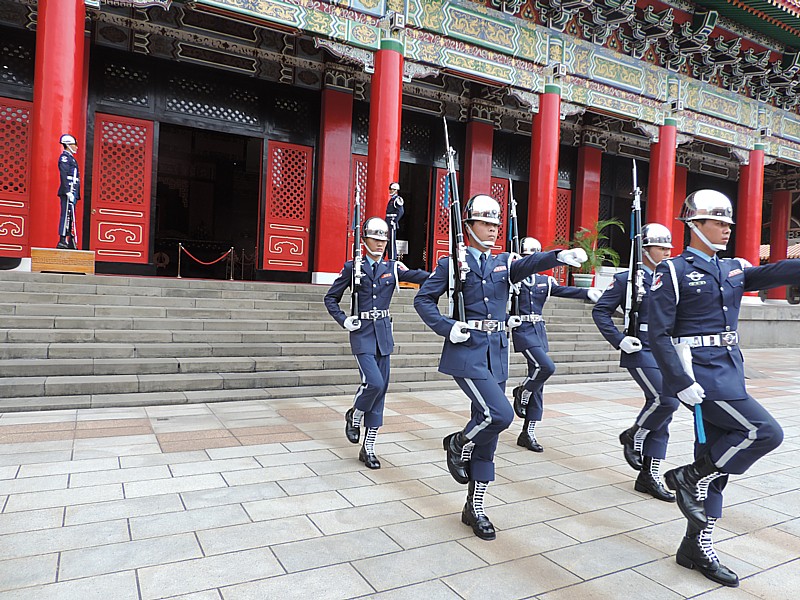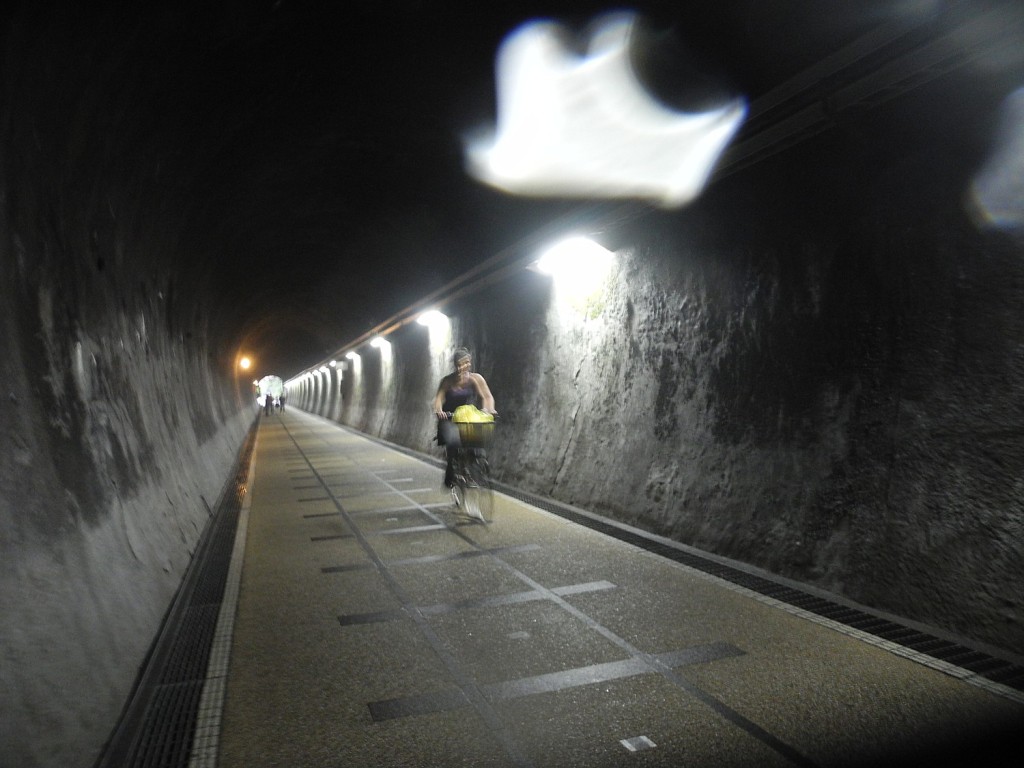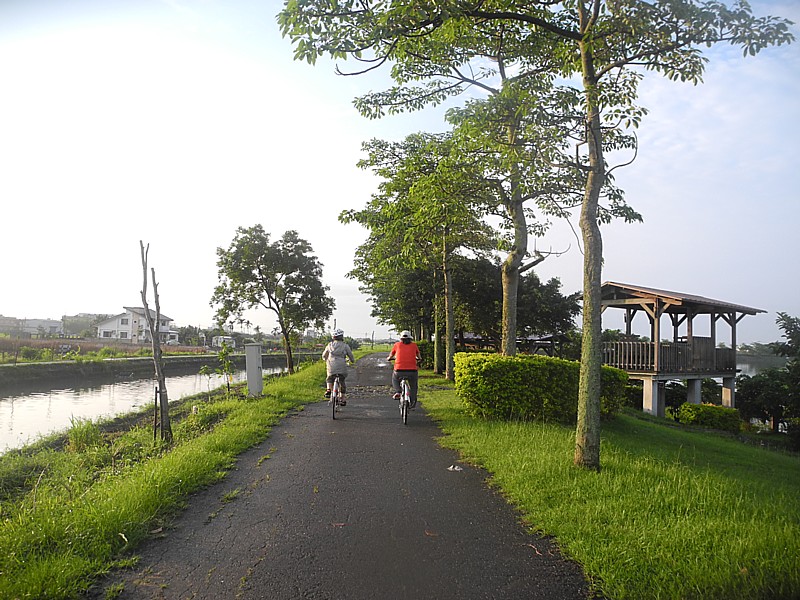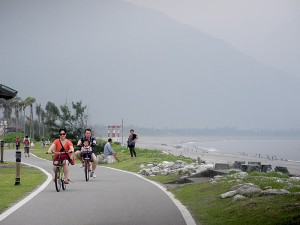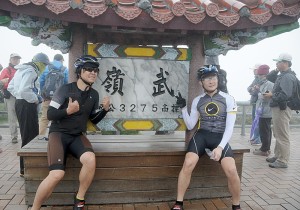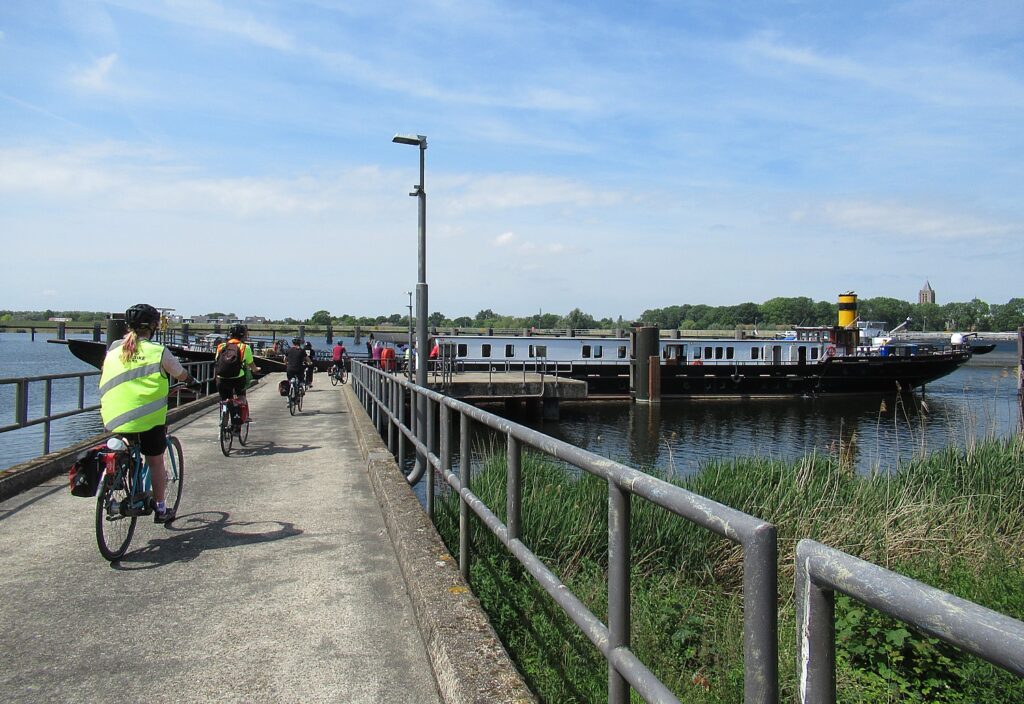
By Karen Rubin, Travel Features Syndicate, goingplacesfarandnear.com
I have been wanting to do this bike tour from Bruges to Amsterdam (or reverse) for years, and like so many having come out of the trauma of a global pandemic, decided not to it put off any longer, but seize the day! I booked with BoatBikeTours.com.
Besides offering a great biking route, the eight-day/seven-night trip is by boat – so your room (and stuff) floats along with you (in fact, we see our boat frequently from the bike trail). The boat itself provides other marvelous experiences – a couple of afternoons relaxing (there’s even a hot tub!) while watching the gorgeous scenery go by, and the camaraderie on the ship. (Even better, as it turns out, the boat meets us to pick us up on two afternoons when a thunderstorm is expected).
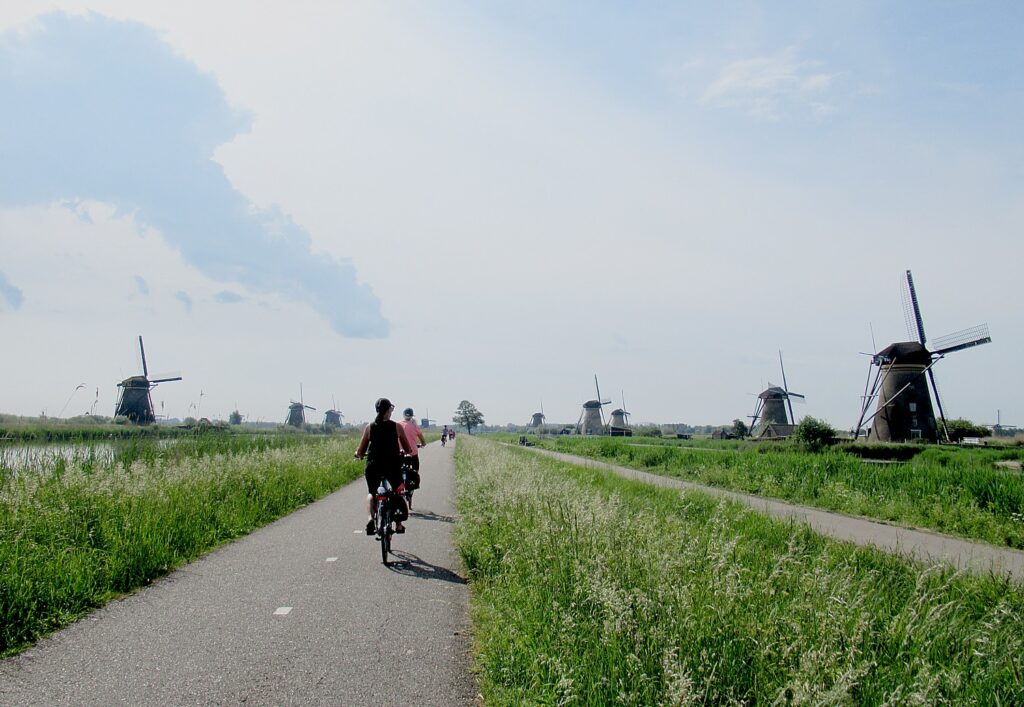
I am surprised at how many Americans there are on this biketrip since BoatBikeTours is based in the Netherlands, but I am sure the other Americans, who are in the majority on this trip, are as delighted as I am in finding this bike tour operator.
The Europeans include a couple and a group of four from England and a family of four from Dresden (where I had just visited) which adds to the pleasure of this trip. The Americans come from all over – Oklahoma (who protest that they are not like those rabidly red Oklahomans), Michigan (actually Holland, Michigan), Seattle, Washington, Idaho, Colorado, California, New York. (Two couples who were expected had to cancel for COVID.)
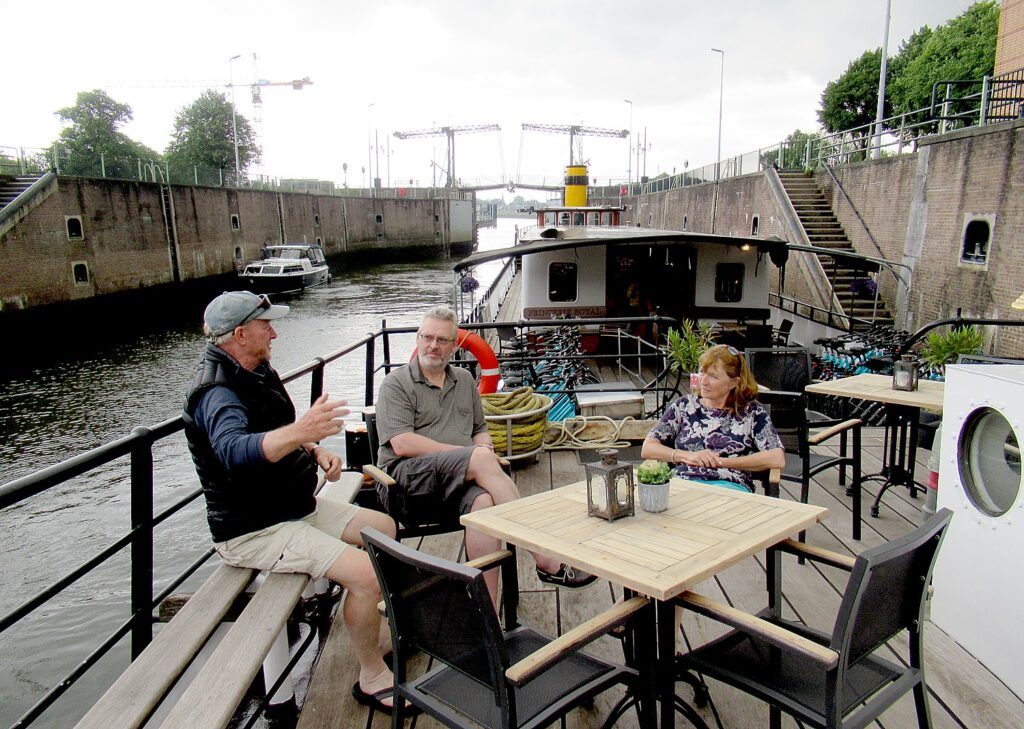
Each evening, our guides Corrie Stein and Arnold Thurkow – as pleasant and personable as they are expert leaders – discuss what we will see and do on the next day’s ride, and typically, there is a short option for the longer ride.
Everything we experience is exactly as it is presented in the brochure – which is saying a lot. Each day is an absolute delight in every respect, and my longtime dream is realized even better than I imagined it would be.
We are quickly introduced to the fabulous bike trails, paths, roadways that we will follow from Bruges, Ghent, Antwerp all the way to Amsterdam in this most bicycle-friendly region of the world, where biking is a predominant culture. In fact, it seems we see more bikes than cars in the course of our trip.
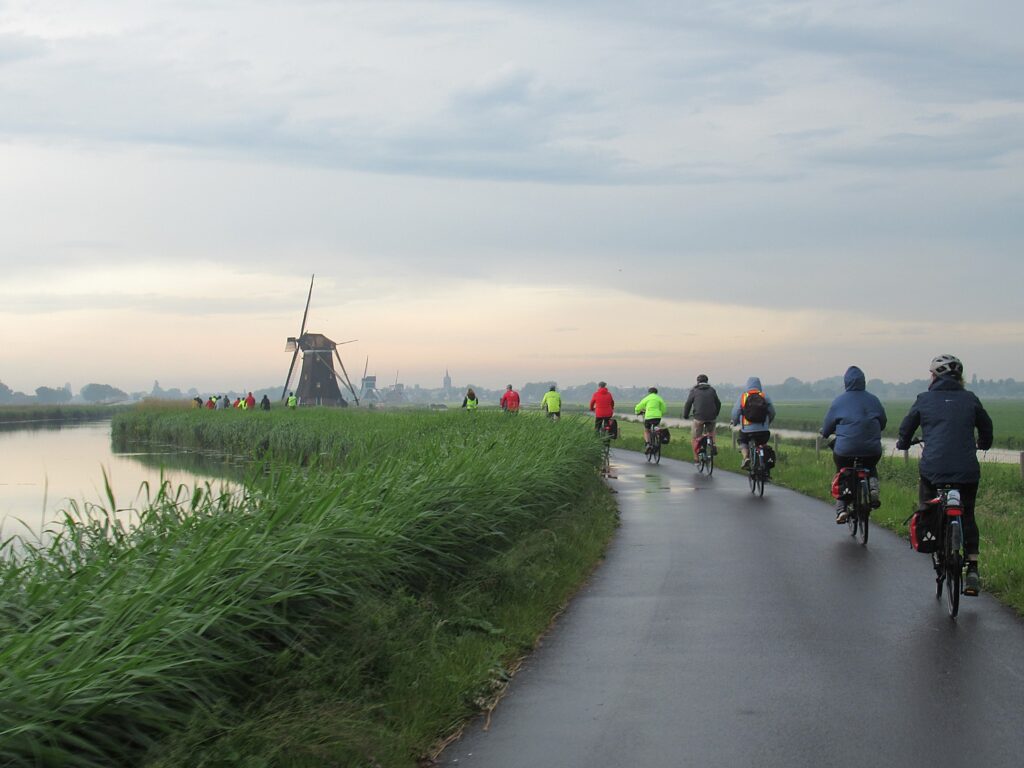
We cycle through gorgeously scenic – and flat –western Flanders region of Belgium, famous for its medieval towns and castles, and Dutch countryside of Zeeland, a big river delta of the Rhine, Meuse and Scheldt Rivers. Among the highlights: we see Ghent by canal boat, tour the fascinating Red Star Line immigration museum in Antwerp, explore the iconic UNESCO World Heritage Dutch windmills of Kinderdijk, visit an artist’s gallery in a tiny village, and tour a Dutch cheese farm.
And then there are the serendipitous experiences – like the downpour while we lunch in a barn with cows and goats, and biking back to the boat from Dordrecht at night, our bike lights making us look like a line of fireflies, a highlight for everybody. We find something of interest around every bend, in towns, villages and landscapes you would otherwise never see – Dendermonde, St. Amands, Tholen, Breukelen (immigrants from here settled Brooklyn!).
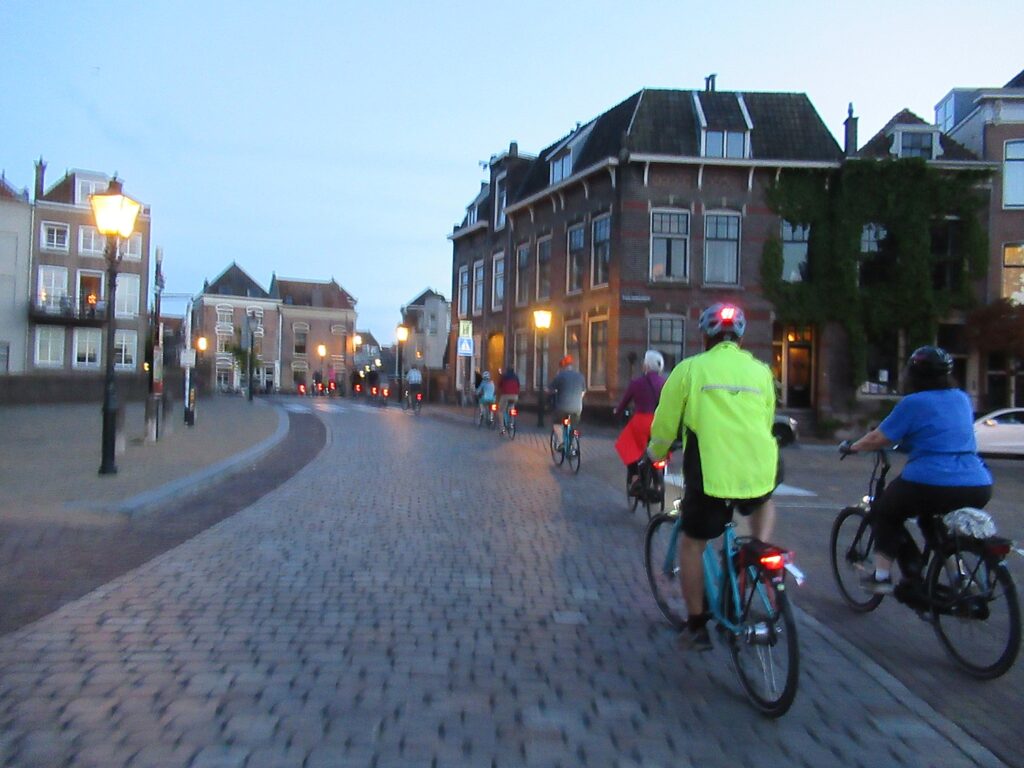
In between cycling excursions, we cruise along these lovely canals and rivers, the scenery absolutely gorgeous. Each place we dock, we are able to get off and with marvelous narration by Corrie and Arnold that adds immeasurably to the experience.
Importantly for me, we generally spend sufficient time in places to get a sense of them – I don’t feel hurried away – like when we visit the Kinderdijk windmills and Antwerp (though this is a city I would definitely come back to, to really explore). Our route takes us passed privately owned castles (just look, don’t visit), a very unexpected farm museum, a Canadian soldiers’ war cemetery.
Our ship, the Princesse Royal, is extremely pleasant – just the right size, marvelous fun and comfortable for our travel.

Its hull is constructed along the lines of a seagoing sailing vessel, giving it a somewhat unique shape, but the vessel has been converted to a passenger barge for inland waterways. The boat was restyled and refurbished in 2010 and during the winter of 2012-3, extended by 14 meters. There is a very pleasant dining room/lounge area as well as outdoor seating area (even a hot tub!). There is even WiFi (free).
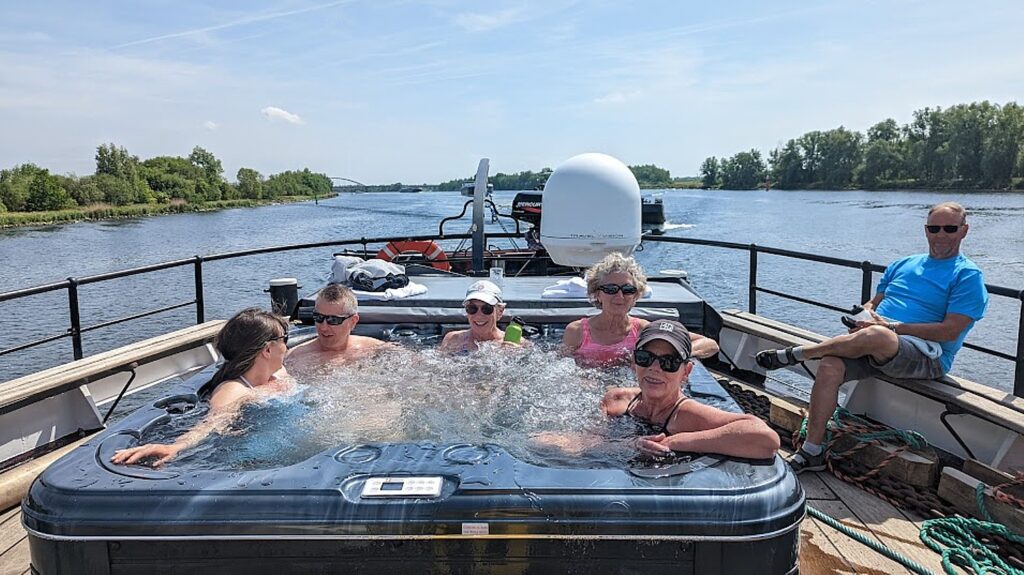
The Princesse Royal, which sails under the Dutch flag and management, plies the inland waterways of the Netherlands, Belgium and Germany with an crew of seven, led by Roy van der Veen who is the owner and captain of the ship and not above hauling in lines himself; a mate, a chef, housekeeper, host and two tour leaders. The crew all speak Dutch, English and German.
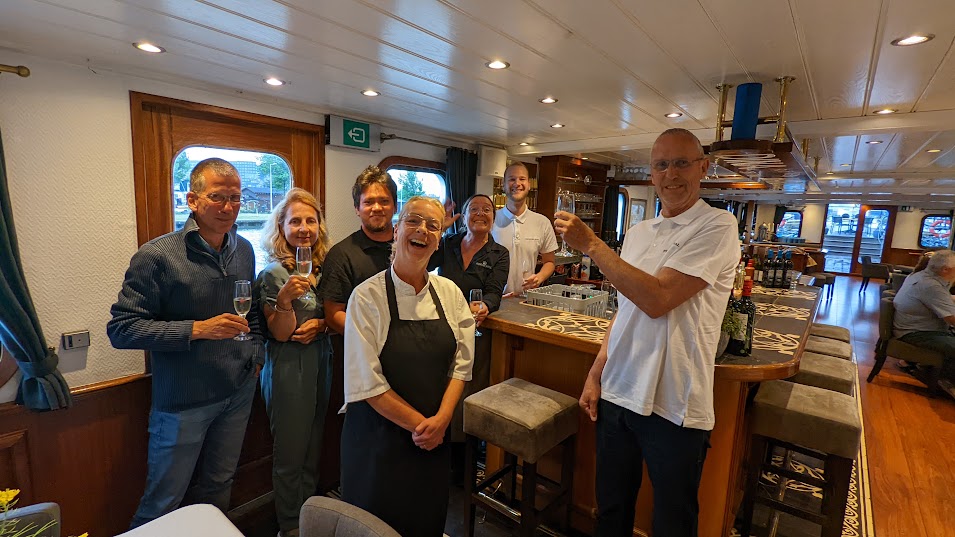
The Princesse Royal accommodates 33 passengers in 16 comfortably appointed cabins. All cabins have portholes (which are fixed for safety reasons), shower, toilet, a washing bin, individually regulated air conditioning, flat screen TV (satellite), 220/230 Volt electric sockets, a small safe and hair dryer. The cabins are cleaned daily.
The meals are marvelous and wonderfully served – breakfast is a buffet with some special hot item each day and a selection of items laid out for us to pack a lunch to take along. In the evening the chef serves a three-course dinner – surprisingly exotic and diverse, always extremely flavorful, substantial and healthy. Though we don’t get a choice of entrée, accommodations are made for dietary restrictions with advance notice; more strict diets are accommodated at an additional charge. One evening (during our overnight stop in Antwerp), dinner is on our own (our guides offer helpful recommendations).
Coffee and tea are available all day long (there is a very sophisticated coffee maker). In addition, there is a bar serving beer, red and white wine and various kind of liquors which does a brisk business (they keep a tab that is paid in cash at the end of the trip).
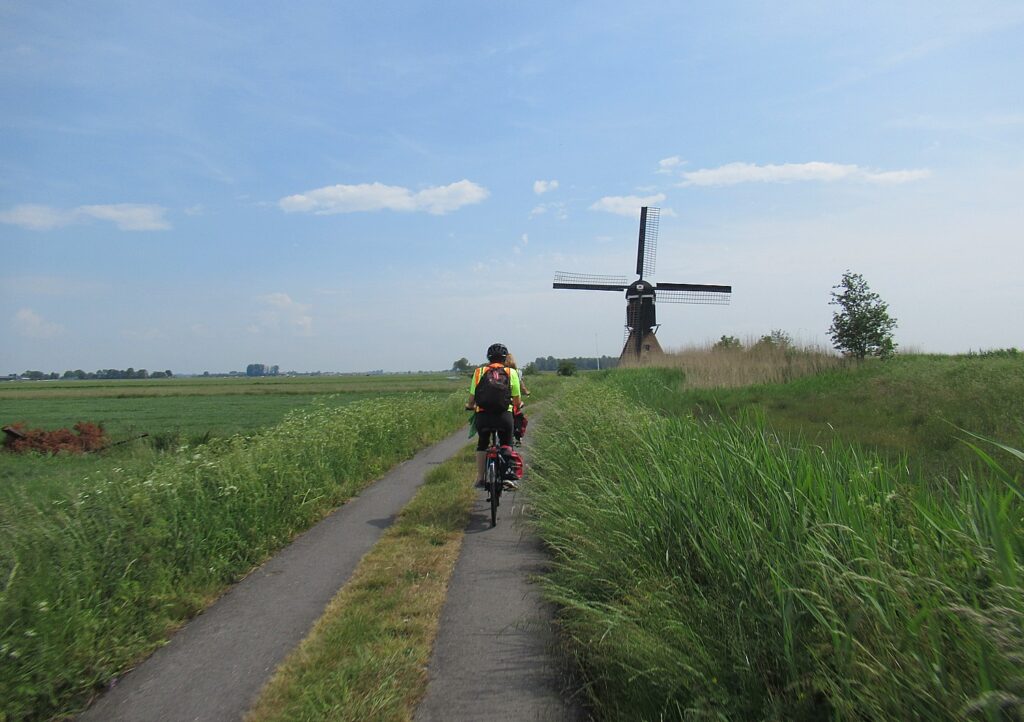
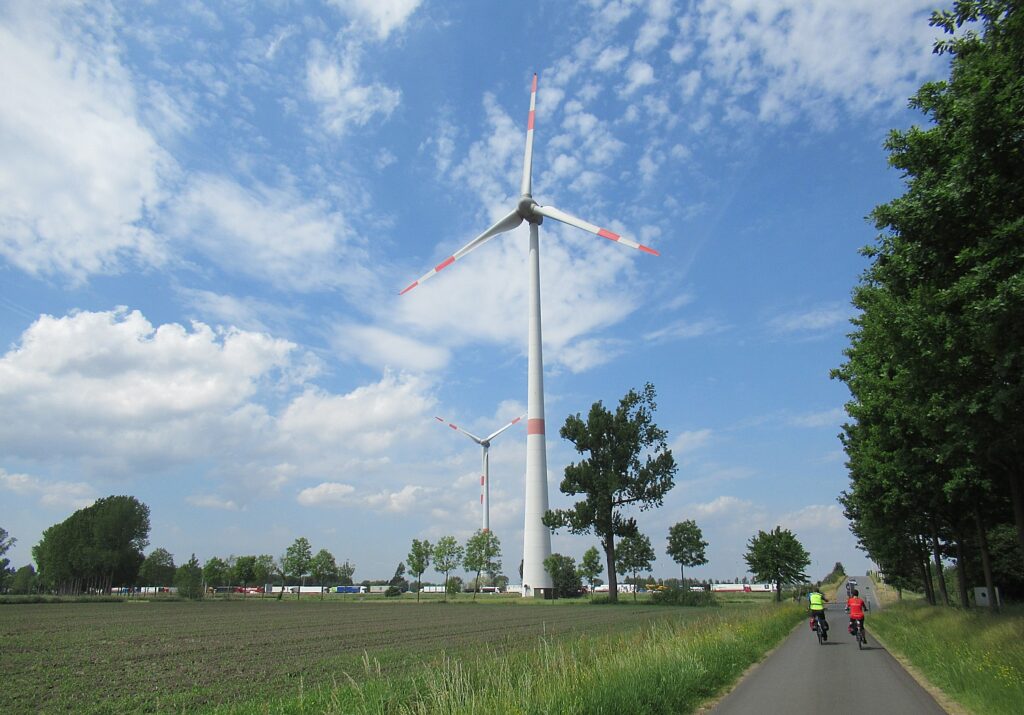
It is important to also emphasize that travelling by small ship and bike is one of the most sustainable, responsible ways to travel, with the least adverse impact on environment or community, while also providing the economic wherewithal to sustain the heritage we have come to see. The tour company notes that wastewater is collected in a separate tank that is regularly emptied; we are provided a water bottle to refill with tap water (all the ship’s water is filtered) and we are given paper bags instead of plastic to wrap our lunch. In addition, the company makes a carbon offset payment to the non-profit organization Justdiggit.
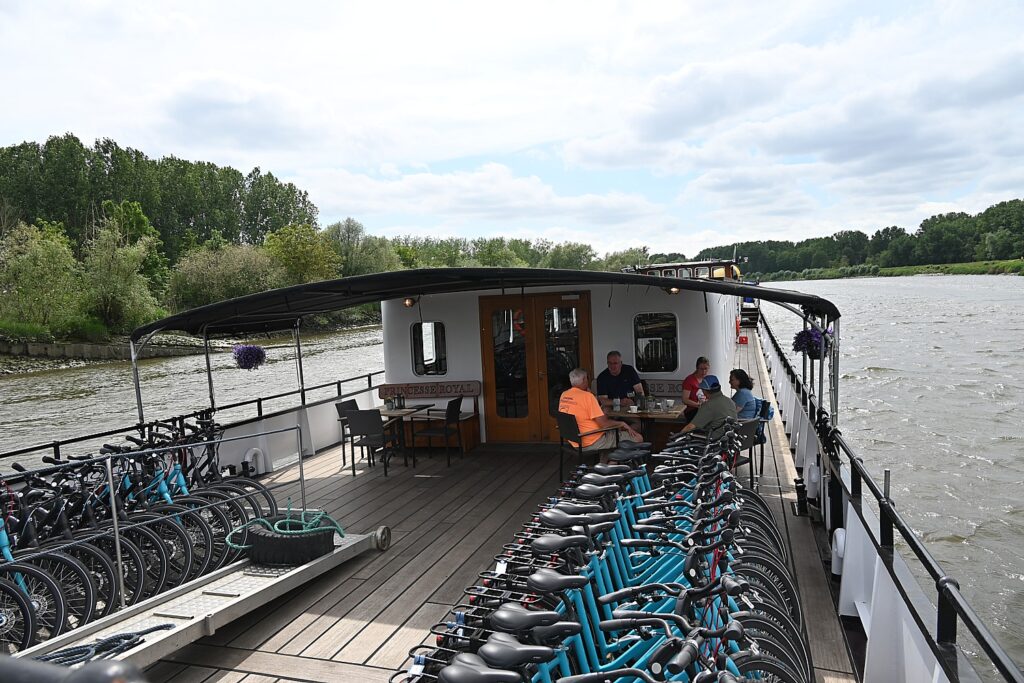
Each day, we are given written cue card directions, as well as have the opportunity to download RideGPS to our smartphones (it operates just like your car GPS, with a map and voice navigation and a means of using it off-line). But there is no need, because we follow our leader (one of us volunteers to be the sweep), though I enjoy following our progress on the cue sheets.
We are also supplied with helmet, waterproof pannier bag, water bottle, and the tour includes the fees for ferries.
I’ve done some hard trails – like the five miles up Cadillac Mountain Road in Arcadia National Park last summer on Discovery Bicycle’s Coastal Maine (you’d think “coastal” meant flat, well you’d be wrong, but this part of the ride was optional); South Dakota’s Badlands and Black Hills with Wilderness Voyageurs which featured a five-mile straight up the road in Custer State Park; Albania with BikeTours (I had an e-bike for the first time, which opened a whole new dimension).
I was in the mood for something more relaxing and the Bruges-Amsterdam bike/boat trip is exactly that. Not only the comfort (and fun!) of being on the boat, but the itinerary is absolutely perfect – especially for first-time biketour goers, for families, and those looking for the most picturesque route you could imagine, with options for shorter or longer rides. And this route is incredibly flat and easy – the only “hills” involved riding over bridges – so that our 7-speed hybrid bikes are more than sufficient.
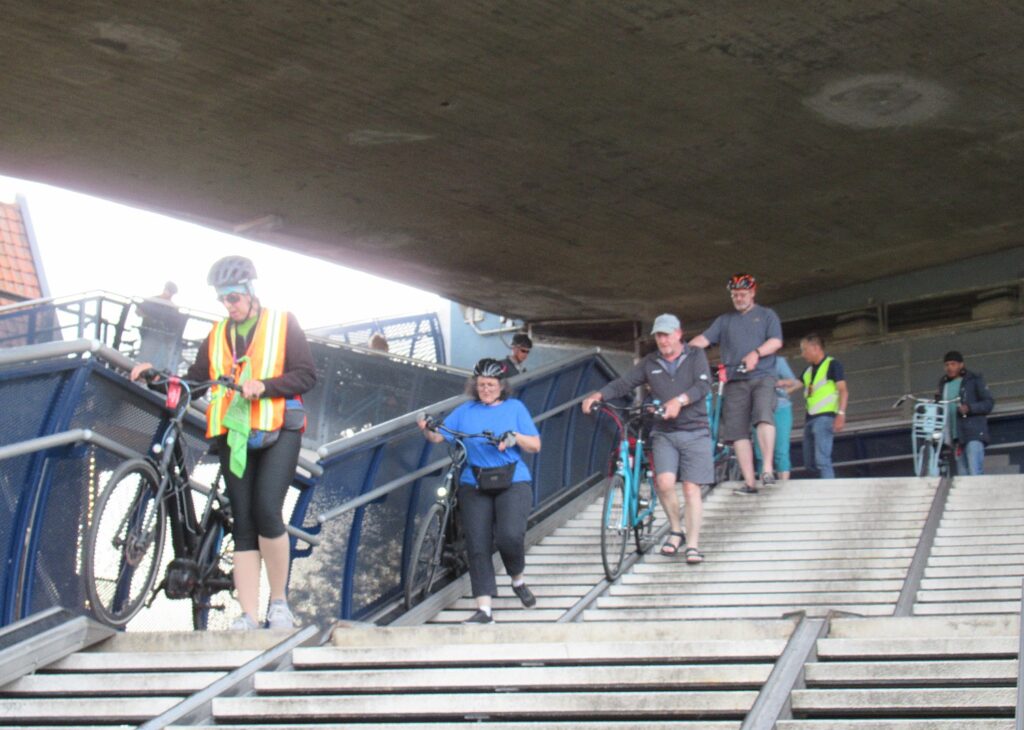
The daily rides are absolutely perfect – constantly scenic, endlessly interesting, very fun. Biking is the best – bringing you through villages, neighborhoods, even to people’s backyards and discovering places and their interesting stories – like Dendermonde, St. Amands, Tholen, Vianen, Dordrecht – that you otherwise would be unlikely to discover. You travel at a pace so you can really enjoy the view – slow enough to really observe, fast enough so there is an endless change in scene, almost like a movie. And you can stop for a photo or just to take it all in. And then there is the physical pleasure of biking – the endorphins that get revved up, the fresh air.
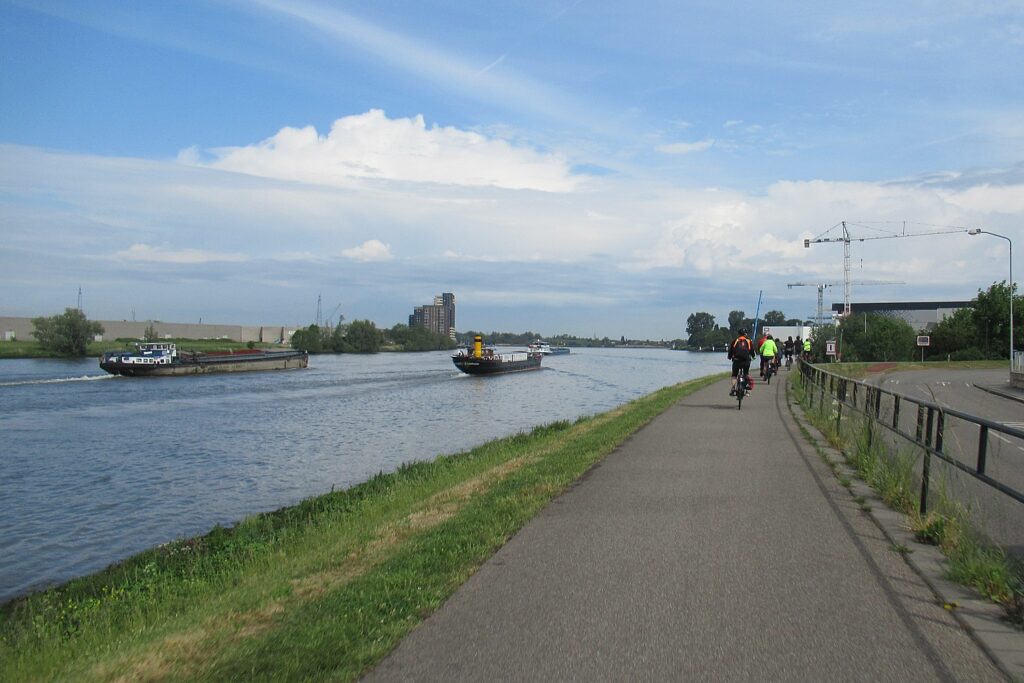
And everybody bikes in Belgium and the Netherlands (I’m told Utrecht has the largest bike parking lot in the world, accommodating 12,500 bikes but the one at Amsterdam’s Central Station is the most enormous I’ve ever encountered). You’d see a guy coming toward you looking like he was riding the Tour de France and realize as he sped by he was a wrinkled old yet incredibly fit man; little kids bike; families had their kids in Bakfiets (literally translates as “box bike,” a popular cargo bike that the Dutch use to carry almost anything, including children) from place to place.
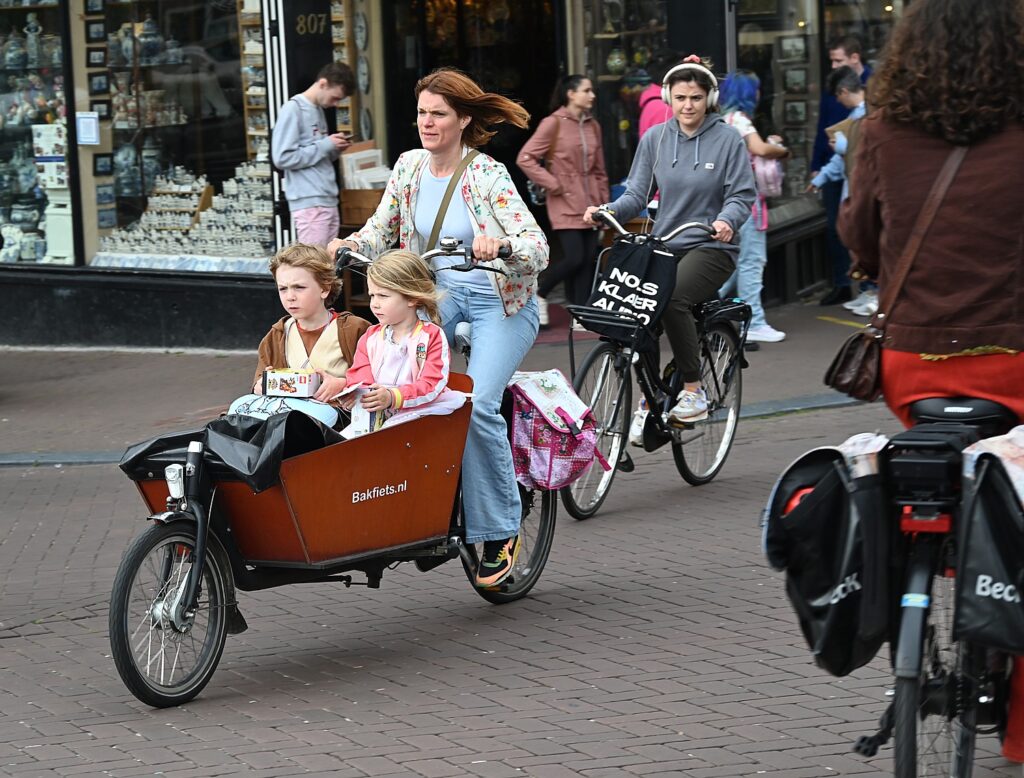
The trails, paths, roads, and segregated bikeways, with their own traffic signs and signals and traffic-calming systems that keep shared roads safe for cyclists, add to the absolute delight and sense of security so you can just enjoy the scene. In fact, cycling accidents are rare – the Dutch don’t even use helmets.
Everything is set up for bikes. And the rules of the road are very specific. On our first afternoon Arnold reviews all the different signs and signals (shark teeth pointing at you means “take care, give priority to traffic”). “Don’t assume,” Arnold tells us finally. “Look in the eyes of the driver, if he stops and waves you through. Don’t take the right of way. Give it.”
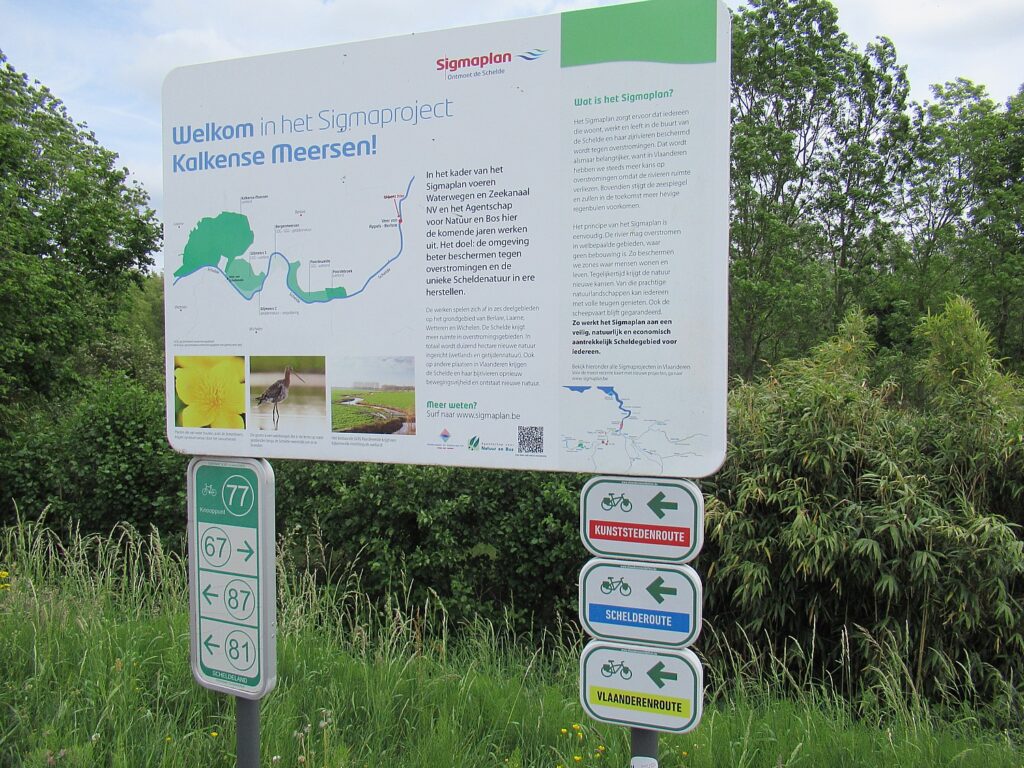
Our first night’s dinner sets the table for the rest: the first course is shrimp fried in garlic and white wine; the main course is pork fillet with red wine sauce, green beans, zucchini, potato au gratin; and dessert is a puff pastry with vanilla cream.
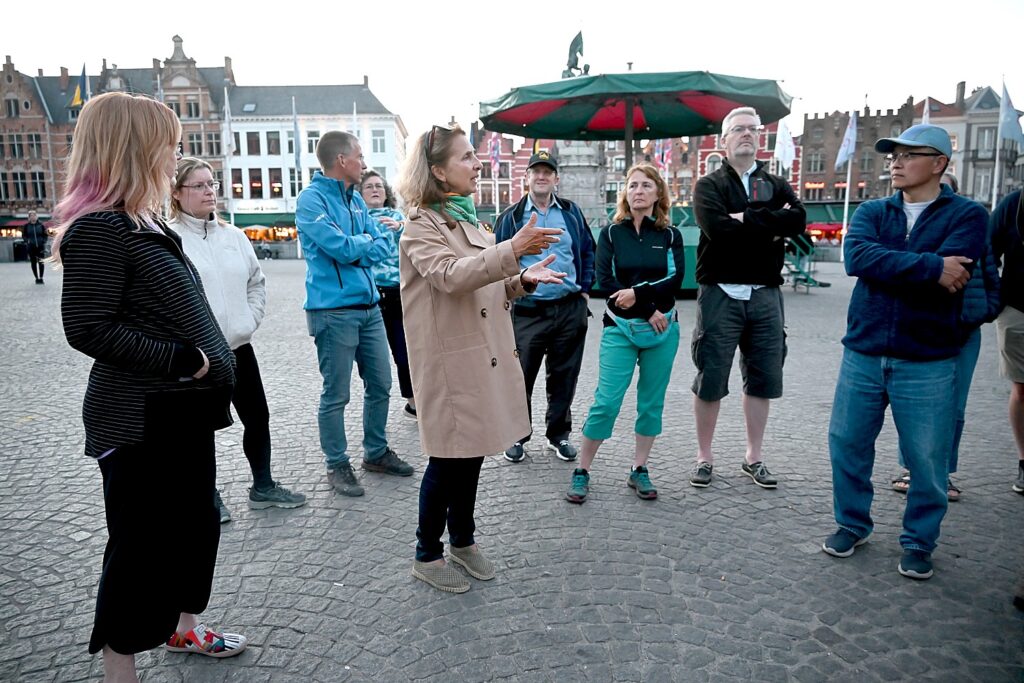
It is followed by Corrie and Arnold leading us on a walking tour of Bruges which we enjoy measurably.
The next morning, we set out. Today’s ride takes us from Bruges to Ghent, 35 miles.
Boat Bike Tours, Aambeeldstraat 20, 1021 KB, Amsterdam, Netherlands, tel.: +31 20 72 35 400, [email protected], www.boatbiketours.com.
See also:
Idyllic Trip: Biking and Boating from Bruges to Amsterdam
Bruges-Amsterdam by BoatBikeTours: Biking to Ghent
Bruges to Amsterdam by BoatBikeTours: Antwerp, Medieval Jewel
Bruges to Amsterdam by BoatBikeTours: Dordrecht, the Birthplace of Holland
Bruges to Amsterdam by BoatBikeTours: The Windmills of Kinderdijk
_________________
© 2022 Travel Features Syndicate, a division of Workstyles, Inc. All rights reserved. Visit goingplacesfarandnear.com, www.huffingtonpost.com/author/karen-rubin, and travelwritersmagazine.com/TravelFeaturesSyndicate/. Blogging at goingplacesnearandfar.wordpress.com and moralcompasstravel.info. Visit instagram.com/going_places_far_and_near and instagram.com/bigbackpacktraveler/ Send comments or questions to [email protected]. Tweet @TravelFeatures. ‘Like’ us at facebook.com/NewsPhotoFeatures
